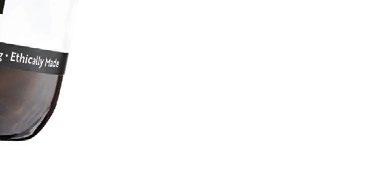





UNLOCK THE SIGNS 5
OF RESILIENT SKIN
with 43% more antioxidant power than retinol*


























babysandbeyond Embracing change in 2024
The heat is here in more ways than one!
The Greek philosopher Heraclitus said, “The only constant in life is change.” This is such a powerful quote and if we truly think on it we realise how accurate it is.
Life can be wonderful, but it can also be messy. Things don't always go according to plan and we need to have a level of flexibility to adapt – and also thrive.
One way we see change in action is with age. We see children grow and develop into their own person. We see our parents get older. We see ourselves get older. With age comes change – we are not the same people we were five years ago.
With ourselves constantly transforming, similarly our goals and priorities change. A great example is becoming a parent. As a parent, there is a shift in what we would deem a priority. Parents often have to change their habits and sometimes goals.
Part of the reason change can seem scary is because it can feel like we are losing our identity. Things that defined us in the past, no longer do. The reality is that we are constantly changing. Think about who you were 10-20 years ago...
For some, years ago life was about being at the best nightclubs, going out to dinners, wearing those killer heels everywhere and so forth. Fast forward and life has changed – there are kids to pay for, bonds, insurance...
Life happens. Change is a given. It's best we embrace and welcome change to continue our journey of transformation.














Life Kingsbury Hospital is here for you.








The Life Kidz paediatric unit at Life Kingsbury Hospital has been designed with you and your child in mind. Our clinical team of specialists and nurses will care for and nurture your child in a unit specially designed to make them forget that they are even in hospital – beds and blankets aside!
Paediatricians:
Dr Rabeen Lutchman
Dr Hazel Msimango
Dr Allan Puterman
Dr Lara Smith
Dr Hedi van der Watt
Paediatric Surgeon: Dr Shamaman Harilal
ENT Specialist: Dr Ola Basson
Dr Gary Kroukamp





12
36

54
58



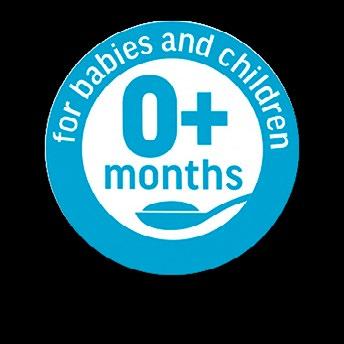



PUBLISHER: Elroy van Heerden Mays elroy@mediaxpose.co.za
EDITOR: Tashne Singh editor@babysandbeyond.co.za
SUB-EDITOR: Tessa O'Hara
CONTENT MANAGER: Wadoeda Adams artwork@mediaxpose.co.za
CONTENT ASSISTANT: Ketsia Makola ketsia@mediaxpose.co.za
EDITORIAL CONTRIBUTORS
Ahmed El Hofy
DESIGN & LAYOUT Shaun van Heerden Mays
Anja Bramley
PROJECT MANAGER: Allison Davids allison@babysandbeyond.co.za
ADVERTISING SALES: Lorraine Beneke lorraine@babysandbeyond.co.za
DIGITAL AND SOCIAL MEDIA
Kyla van Heerden
Tia Arendse
Temo Mpodi
DISTRIBUTION & SUBSCRIPTIONS: Shihaam Gyer distribution@mediaxpose.co.za
MEDIA PARTNERSHIPS: Maurisha Niewenhuys maurisha@mediaxpose.co.za
CHIEF FINANCIAL OFFICER: Shaun van Heerden Mays
WEBSITE ADMINISTRATOR: Justin McGregor
RECEPTIONIST: Daniëla Daniels
RETAIL DISTRIBUTION: On The Dot
AIRPORT DISTRIBUTION: Media Support
PICTURE CREDIT: 123rf.com / pixabay.com




Disclaimer: The views expressed in this publication are not necessarily those of the publisher or its agents. While every effort has been made to ensure the accuracy of the information published, the publisher does not accept responsibility for any error or omission contained herein. Consequently, no person connected with the publication of this journal will be liable for any loss or damage sustained by any reader as a result of action following statements or opinions expressed herein. The publisher will give consideration to all material submitted, but does not take responsibility for damage or its safe return.

Reuterina® drops: A convenient liquid drop designed specifically for infants under the age of two years. Reuterina® drops have been clinically validated in babies and children and have been shown to benefit a variety of health conditions, including colic, constipation regurgitation, acute gastroenteritis, and antibiotic-associated diarrhoea.
Reuterina® Vit D: These drops are specifically formulated with 400IU Vitamin D3, which acts to enhance the absorption of calcium and phosphate in the body.
Reuterina® junior: These strawberry flavoured chew tablets are appropriate for children over the age of two who can chew a tablet. The tablets are indicated for reduction in diarrhoea, childhood constipation, frequency and pain in children suffering from Functional Abdominal Pain (FAP), and immune modulation.
Reuterina® daily: Probiotics are used to help treat and prevent conditions caused by an imbalance in the gut flora.
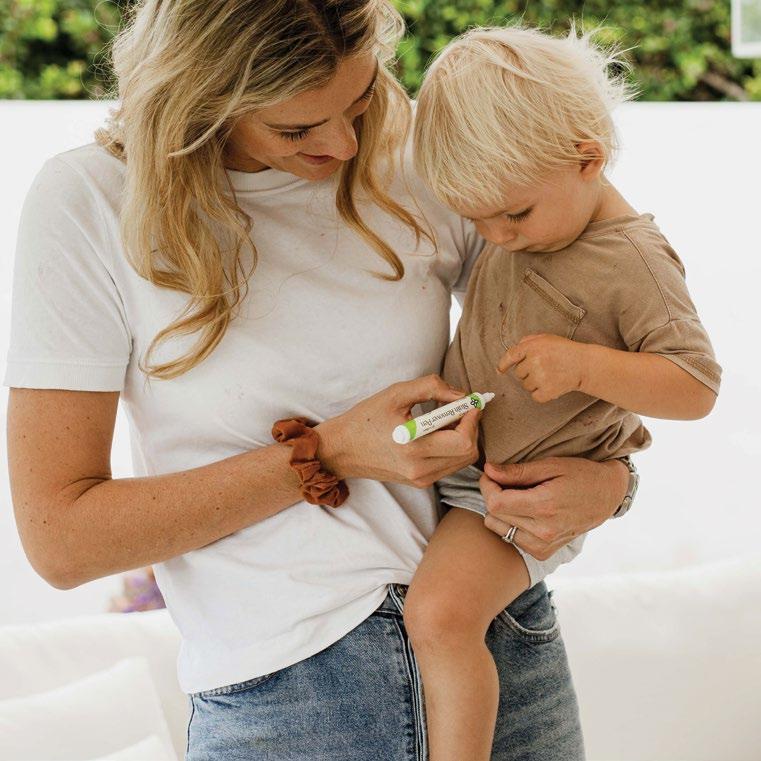

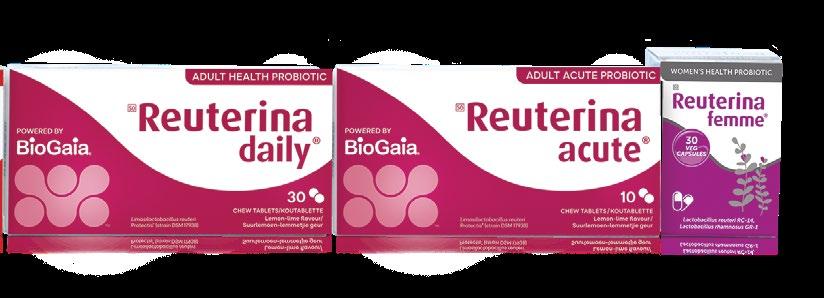

Reuterina® acute: Reuterina® acute aids in the restoration and maintenance of a healthy balance of gut flora during and after an antibiotic course.
Reuterina® femme: When ingested daily, Reuterina® femme helps to maintain a healthy vaginal flora and prevent vaginal infections.
www.reuterina.co.za
Say goodbye to stubborn stains and hello to easy, effective stain removal, all in the palm of your hand and in the cleverly designed shape of a pen.
This waterless GoodBasics Stain Remover Pen is your trusty sidekick for those inevitable everyday accidents. It’s compact and portable and designed to fit seamlessly into your life, whether you're a parent on the move or prone to inconvenient coffee spills between meetings. It’s also perfect for someone with an interest in sustainability and seeking solutions that are kinder to the environment.
Unlike traditional stain removers laden with harsh chemicals, GoodBasics Stain Remover Pen is free from soaps and toxic ingredients, and it's safe for children, pets, and all fabrics. The secret behind its impressive stain-erasing abilities lies in its probacterial, eco-friendly solution which not only swiftly removes stains but continues to work its magic for up to 48 hours after application.
www.goodbasics.com

NURTURE Flexcone electric breast pump
Behaving the same way as your baby would when feeding, the Vital Baby®
NURTURE™ flexcone™ electric breast pump offers a two-phase expression for the most effective, fast and comfortable way of promoting breastmilk production.
The electric breast pump together with its incredibly soft silicone breast cup and flexcone™ provides gentle cushioning around your breast and mimics the suckling action of your baby to provide natural and effective breast milk expression.
NURTURE Easy Pour breastmilk storage bags
Afrika Botanicals is the local and international supplier of ethically sourced, 100% cold pressed natural African botanical oils. Their Big Five African Oils Box Set comprises their best-selling carrier oils.
The Big Five box set contains Mongongo, Baobab, Kalahari Melon, Ximenia and Marula Oil in easy-to-use 30ml glass bottles, that can be used on their own or added to your current skin and hair care products to provide that little something extra. Each oil is wild harvested by rural women from communities throughout Southern Africa, ensuring fair trade policies and is then produced in an organic environment.
www.afrikabotanicals.com


The leakproof secure seal ensures no milk is lost when storing breast milk in the fridge or freezer and the wide neck and free-standing base of each storage bag make it easy to fill.
Vital Baby® NURTURE™ ultracomfort breast pads
The Vital Baby® NURTURE™

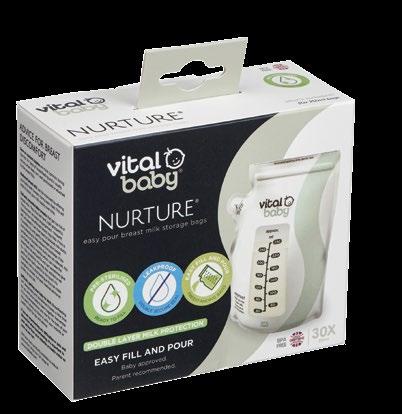
Vital Baby hamper
Comprising of:
ultra comfort breast pads have an absorbent layer to help keep you dry and comfortable day and night. Double sticky tabs for security and to help prevent slipping, and crinkle-free 3D contour for a natural comfortable fit.
Available at Clicks, Dischem, BabyCity, and online at www.vitalbabyshop.co.za
1 x Vital Baby Electric Breast Pump (valued at R2 856.50); 1 x Vital Baby Breast Milk Bags (valued at R221.20); and 1 x Vital Baby Breast Pads 56 pack (valued at R140.90).

To enter scan the QR code with your phone and complete the entry form online at www.babysandbeyond.co.za/ competitions/
Closing date: 31 May 2024. T&Cs apply.
Vital’s PROTECT nailcare set contains everything you need to keep tiny fingers and toenails tamed. The ergonomic design is easy to hold, giving you ultimate control.
Specially designed scissor tips are carefully sized for tiny fingers and toenails. It is easy to hold and has built-in grips to give you extra peace of mind so that you can cut nails safely.
Curved clipper nail guards and small blades are perfectly sized for snipping and trimming with ease and comfort. Smooth over any sharp, rough, or catchy edges caused by cutting and clipping with the emery board for the perfect finish. BPA, latex and phthalate free.

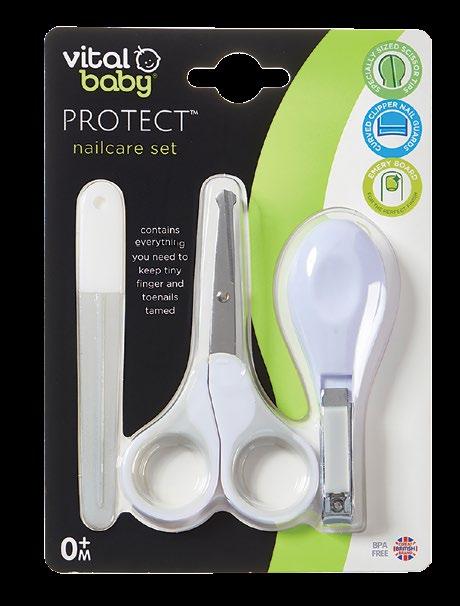

References:
SKNLOGIC Cosmeceutical skin care provides a skin care solution that works with the skin's biological processes to achieve visible results. SKNLOGIC has a synergistic approach to science and nature, offering powerful formulas with optimal concentrations of active ingredients to actively improve skin health and appearance from underneath the skin.
Using the maximum concentration of key active ingredients and the highest grade of quality ingredients from around the world, SKNLOGIC products do not contain any common irritants or cheap fillers such as parabens, mineral oil, formaldehyde, artificial colourants or sulphates.
SKNLOGIC is available at selected salons countrywide and online from www.sknlogic.com.
Did you know that one in two children may suffer from worm infestations?1 This can lead to stunted growth and mental health conditions in your children.1,2 The World Health Organisation recommends de-worming the entire family twice a year.2* Ask your pharmacist about Wormstop®, suitable for the whole family.3**
*Based on an infection rate in the community that is over 50%.
**Suitable for children from 2 years and above, not indicated for animals.
1. Nxasana N, Baba K, Bhat VG and Vasaikar SD. Prevalence of Intestinal Parasites in Primary School Children of Mthatha, Eastern Cape Province, South Africa. Annals of Medical and Health Sciences Research. 2013(3):4, pgs511-516.
2. Soil-transmitted helminth infections. World Health Organisation. [online]. https://www.who.int/news-room/fact-sheets/detail/ soil-transmitted-helminth-infections [Accessed 25 July 2019].
3. Wormstop® 100, Wormstop® 500, Wormstop® Suspension Package Insert.

For children teething and for slight stomach ailments occurring in infancy.

You love watching your baby hit those sweet milestones, the first smile and the first giggle. One milestone that is sometimes not so sweet is teething. That is because teething is one of those milestones that can bring discomfort, tears (for you and baby), and even sleepless nights. Most babies start teething around the age of 6 months, but some may start sooner or later.2
The most common symptoms of teething are mild irritability and lack of appetite. Other symptoms include drooling, chewing on solid objects, mild fussiness, crankiness and sore, tender, red and swollen gums1
You can relieve your baby’s teething pain by gently massaging your baby’s gums with a clean finger or holding a chilled (never frozen) teething ring for your baby to chew on to ease discomfort.1
For children teething and for slight stomach ailments occurring in infancy. Try ASHTON & PARSONS Infant Powders.
A baby is more likely to experience stomach discomfort when they are unable to pass gas. The good news is that there are ways to soothe your baby.3
Swaddling babies in a warm blanket and rocking them back and forth may calm fussiness. Soothing background noises, calming music or white noise can also help.3
Wearing babies under 6 months in a chest-to-chest carrier can often calm them, as can going for a walk outside in a baby carrier or stroller. The change of scenery can be calming for parents and infants. A brief car ride may soothe your baby, too.3
Try WOODWARD’S Celebrated Gripe Water, a tried and trusted medicine that comforts infants with gripes. WOODWARD’S Celebrated Gripe Water acts as a carminative and brings an acid neutralising action. It is available in 150 ml at selected retailers and pharmacies.

References: 1. Johnson S. [Internet]. Teething Syndrome: When Your Baby Starts Teething. 2017 Aug 17. Healthline.com. [Updated 2017 Aug 17; Cited 2023 Sept 26]. Available from: https://www. healthline.com/health/teething#outlook 2. Higuera V, Chertoff J. [Internet]. When Do Babies Usually Start Teething? Healthline.com. [Updated 2021 Nov 29; Cited 2023 Sept 26]. Available from: https:// www.healthline.com/health/parenting/when-do-babies-start-teething#symptoms 3. Higuera V, Holland K. [Internet].How to Use Gripe Water to Soothe Your Baby. Healthline.com. [2023 May 19; Cited 2023 Sept 26]. Available from: https://www.healthline.com/health/parenting/gripe-water-for-babies
S0 WOODWARD’S Celebrated Gripe Water. Reg. No.: E/11.4.3/1551. Each 5 ml contains 50 mg sodium bicarbonate and 2,15 mg terpeneless dill seed oil. S0 ASHTON & PARSONS Infant Powders. Ref. No.: E679 (Act 101/1965). Each sachet contains 4,055 mg tincture matricaria duplex Trademarks are owned by or licensed to the Aspen group of companies. © 2023 Aspen Group of companies or its licensor. All rights reserved. Marketed by Pharmacare Limited t/a Aspen Pharmacare. Co. Reg. No.: 1898/000252/06. Healthcare Park, Woodlands Drive, Woodmead, 2191. ZAR-ZOSEAG-10-23-00002 11/2023

To comfort infants with gripes.
Marketed by Aspen Pharmacare
www.aspenpharma.com
Hotline 0800 122 912
People originally know J’Something as a member of the popular music group Mi Casa. Over the years he, together with his wife, Cordelia aka Coco da Fonseca, have established themselves as foodies. As one of SA’s most awesome – and loved-up – couples, they share some of their exciting journey with Baby’s & Beyond



Tell us a bit about your relationship with food – when it began, how the passion grew, and how you broke into the food industry.
J’Something: Food has always been a huge part of my life; my late father travelled the continent heading food and beverage operations for various hotel groups. After settling in the Eastern Cape, my mother went on to open and run her own restaurant successfully for 13 years, so the kitchen was like my second home.
My journey was birthed by my social media family; after posting a roast chicken recipe and randomly hashtagging #SomethingsCooking, a dream was born. This name became the title of a cooking show, cookbook, and restaurant.
Breaking into the industry was possible because of the support and encouragement of so many people. It has been an incredible journey and I still look forward to what else is in store.
Coming from a PR background, tell us a bit about your career change into the food industry. Coco: The journey has been such a huge part of my purpose. Everything I've learned has been self-taught. It helped a lot to have the belief of people around me; Dale Herbst played a huge part in getting me to believe in myself.
To date, I have headed up food direction on cooking shows, creatively directed a cookbook, and developed menus for restaurants. And now, together with my husband, we are building a food and lifestyle brand called By Coco & J.
... after posting a roast chicken recipe and randomly hashtagging #SomethingsCooking, a dream was born.
What is the most exciting part about working together?
J’Something and Coco: With both our busy lives, having a day dedicated to spending time together and doing what we love, which is cooking, has been an amazing part of working together.

Tell us a bit about the Parmalat collaboration.
J’Something: The Parmalat collaboration was such an organic and fun collaboration. In our home, butter is king, and so working with a brand that is a staple in our fridge was such a joy.
The dishes we chose were ones that we make often and are loved by our family and friends. It was so much fun filming the content and we loved seeing people recreate the recipes at home.



Being together for approximately 13 years, how has your relationship evolved?
Coco: Growing together has been an adventure We have both evolved in so many ways. There is nothing more beautiful than seeing someone you love grow and thrive in their purpose.
J’Something and Coco: “For You My Love” is a food and lifestyle concept that showcases us and our mutual love for life and food. The aim is to share our love story through what we like to call our “6th love language”, food.
Professionally, it’s been wonderful to see how no matter how much popularity or praise J receives, he has managed to remain humble and stay true to his core values and principles.
J’Something: We have so many more hopes and dreams! In time and God
willing it will all come, but for us, it’s all in the “one day at a time” mindset.
There is also something magical about creating a life and family together; becoming parents has brought out the best of us. Being with our family every day is our greatest blessing. Watching the person you love, love a miniature version of themselves or you, is out of this world.
How do you complement each other?
Coco: We always joke and say that J is an optimist and that I'm a pessimist. Over the years we’ve learned how to make these attributes work for our marriage.
J is a dreamer; he sees the good in everything and everyone and when he gets an idea in his head he’s already set and ready to go.
I question everything; what’s the plan, what do we need? Do we trust them? The combination of the two has helped us get a lot of balance; we weigh out the options, plan well, and then dream away!
What is key to having a lasting loving and respectful relationship?
Coco: It’s hard to answer this one because relationships are all so different, but for us, our faith, communication, and taking it a day at a time have been what
we have done to continuously work on our relationship.
Consistency is also vital; don’t get lazy, don’t get bored, and stay consistent in the pursuit of one another.
What is next on the cards for the da Fonseca family?
J’Something: We are fortunate to be able to create and explore with each other, but if I had to pick the next big thing on the cards for us it would be a trip to Portugal.
Most of my family lives in Portugal and taking my children “home” to be with my brother, nieces, and aunt would be an incredible moment.
Fave food dish: Grass-fed beef with butter and garlic
Fave destination: Home with my family
Best experience: The ability to create Motto in life: One day at a time
Pet peeve: Negative energy
Guilty pleasure: Any type of sweet pastry
Fave food dish: Pap with cabbage, morogo and mango atchar
Fave destination: Millibangalala in Mozambique

Best experience: Motherhood
Motto in life: One day at a time
Pet peeve: Unkind people
Guilty pleasure: Carbs!

Globally, the past few years have seen a significant shift in the average age of first-time mothers.
According to data published by the Organisation for Economic Co-operation and Development (OECD), many countries have seen the mean age at which women give birth increase to 30 and above.
This ‘delayed motherhood’ trend warrants more effective awareness campaigns to highlight both the benefits and potential risks associated with later-life pregnancies.

For many reasons, an increasing number of women are reviewing their decisions on motherhood within the broader context of their financial and career goals, their personal ambitions and the increasing cost of living.
Some significant advantages of having a baby after the age of 30 is a greater likelihood of financial stability, more established relationships with a support system, better preparedness, and greater emotional maturity.
There are, however, a few risks for both the mother and baby that women need to be aware of – which can be addressed by early detection and medical intervention. Dr Liani Smit, medical geneticist working with Mediclinic Precise shares some insights.
As she explains: “Chromosomal abnormalities are common and can occur in up to 1 in 150 live births.
“The risk for some chromosomal conditions, such as Downs syndrome, increases with maternal age, but chromosomal conditions can occur in any pregnancy. These conditions often have a significant impact on a baby’s health and development and in some cases life expectancy.”
In Dr Smit’s opinion, having a clear understanding about the risks that come with the possibility of an underlying chromosomal condition early in pregnancy, can be immensely empowering for expecting mothers. Armed with the right knowledge, parents can work with their antenatal healthcare practitioner to make informed decisions about managing the pregnancy in a way that is optimally beneficial for mother and baby.

NIPT is based on a simple blood test from the pregnant woman...
The role of prenatal testing
Encouraging pregnant women – especially in their first trimester – to get screened and tested for a range of conditions, was Mediclinic Southern Africa’s main message during Pregnancy Awareness Week. This annual awareness campaign aims to educate pregnant women about the importance of prenatal care, including regular check-ups, nutrition, and lifestyle choices that can affect the health of both mother and baby.
The initiative also seeks to address maternal health issues including pregnancy and post-natal complications. Furthermore, in a bid to provide South African mothers with greater peace of mind, Mediclinic launched its own system of safe, non-invasive prenatal testing (NIPT) for expectant mothers last year, as part of their DNA-based diagnostic and clinical interpretation services.
As Dr Smit explains, the Mediclinic Precise Panorama NIPT screens for common chromosomal conditions in the foetus, such as Downs syndrome, Patau syndrome, Edwards Syndrome, sex chromosome aneuploidies (chromosomal conditions caused by the loss or gain of a sex chromosome) and optional screening for up to five microdeletion syndromes which may be missed during routine prenatal screening.
In what can already be a stressful journey for parents-to-be, especially those who become pregnant later in life, Dr Smit emphasises that NIPT is designed to be as safe and accurate as possible.

“NIPT is based on a simple blood test from the pregnant woman which examines the genetic profile of the foetus (or multiple foetuses) to understand the risks for specific genetic conditions from as early as nine weeks into pregnancy,” she says.
“At Mediclinic, we encourage expectant parents to be screened for genetic conditions during their pregnancy, so that they are armed with the necessary insights to discuss their options, possible risks, implications as well as potential outcomes with their respective healthcare practitioners,” she adds.
According to Dr Lindsay Petersen, General Manager of Mediclinic Precise, Panorama NIPT uses unique technology to analyse cell-free DNA fragments in the mother’s bloodstream and can differentiate which DNA fragments are maternal and foetal in origin.
This data can be interpreted independently, leading to more accurate assessments. This technology is also substantially beneficial in the cases of twin pregnancies too. The Panorama NIPT is the only offering available on the market to do this and can also detect certain rare genetic conditions that other NIPTs cannot. This includes cases such as Triploidy, where a foetus has
a complete extra set of chromosomes in their cells, meaning they have 69 chromosomes instead of the standard 46.
An important branch of science for a healthier future “In collaboration with the patient’s doctor, who will complete a requisition form on behalf of the patient, Mediclinic Precise provides the consulting doctor with expert guidance on the patient’s unique genetic report. The doctor will then relay the information, including any risks factors that the mother needs to be aware of.
“This information enables both you and your doctor to make informed decisions about your pregnancy, prepare for your baby’s arrival and take early interventions to optimise their care,” says Dr Petersen.
Dr Petersen concludes that optimising cutting-edge technologies, such as Next Generation Sequencing has several benefits.
“Not only will this provide peace-ofmind for expecting parents, but we believe it will advance the utilisation of precision medicine in South Africa and will offer a better understanding of the role of genetic markers in certain diseases.”

Expectant parents can dramatically improve their journey into parenthood and foster a stronger bond by ensuring that partners are actively involved in the fulfilment of specific roles at every stage.
Dr Dheshni Naidoo, a gynaecologist and obstetrician practising at Netcare Linkwood Hospital, notes that during this time, the partner is often unsure of where they fit in, which can lead to them feeling emotionally isolated and depressed, particularly during the postnatal period.
“Building the role of the partner into the pregnancy and birth from early on and identifying opportunities for them to participate actively will help to strengthen the relationship during what can be a challenging time, particularly during those early weeks of newborn life,” she says.
“As the child bearer, it is understandable that the needs of an expectant mother are top of mind. However, the partner also has an essential role to play and empowering them can positively impact the journey the couple is ultimately embarking on together. When partners

are actively involved at every step of this enormous life change, we see significantly healthier pregnancies and natural births.”
Sister Amori Jordaan, a specialist midwife and maternity unit manager at Netcare Linkwood Hospital notes that while partners are more involved in pregnancy, birth and child rearing than ever before, many still feel stigmatised if they speak up about their emotions.
“The changes that women undergo as child bearers are undeniably difficult and demanding. However, when it comes to the emotional aspects of having a baby, partners are also affected, but their bodies and hormones do not provide any preparation, and they are entitled to only a few days of paternity leave.
“A family-centred approach to care where the mother and her partner are included has enormous potential to positively alter the experience for all. We strongly encourage partners to participate in the labour ward and try to make their experience as comfortable as possible with a proper bed and cooked meal for the partner, as part of the maternity experience we offer,” she explains.
Dr Naidoo notes that the changes brought on by pregnancy are easier when not faced alone, and that women are significantly more likely to stick to healthy practices during pregnancy if they have someone to share the experience with.
There are numerous opportunities throughout each stage of pregnancy and birth where partners can get involved, suggests Dr Naidoo.

During this time, many women experience food aversions – this is when her partner can step in and take on the responsibility of preparing nutritious meals that she still enjoys eating.
It is also the time to implement healthy habits such as going for a daily walk together and being supportive through the successful cessation of any harmful habits such as drinking alcohol or smoking.
The nesting process is a good opportunity to prepare for the baby’s arrival together and to discuss your expectations of family life.
Baby showers can be a shared experience and an opportunity to celebrate the imminent arrival of your little one with the important people in your life as a couple.
As you approach the finish line, discuss your birth plan and attend antenatal classes together. If a doula is part of the mix, the partner can help facilitate their involvement.
Single mothers should ask a close family member or friend to be by their side for support throughout the experience.
Partners are very much a part of the birthing team and must understand the phases of labour. At this point, they can help support the mother while she bounces on the ball, help her in and out of a hydrotherapy bath, help with breathing and deal with any administration that needs to take place. There is a markedly higher rate of healthy natural births when partners are actively involved.
Countless opportunities exist at this stage for partners to be heavily involved, from doing skin-to-skin care with their baby to ensuring that the mother is well fed and well hydrated for breastfeeding.
Having a baby comes with layers of emotions. It is essential to manage expectations and communicate clearly with each other.
According to Dr Naidoo, partners should remain sensitive to the enormous change that the mother has gone through and be supportive without taking over.
www.netcare.co.za
The partner can also facilitate family visits so that the mom is not overwhelmed, and also take on certain parts of the daily routine such as bathing baby and doing some feeds to give the mother a muchneeded break.

Changing a diaper can sometimes be daunting, but with a bit of practice you will soon be a pro!
1
Before starting make sure you have all the essentials such as a clean diaper and wipes. In some instances, you will also need diaper rash ointment, and a clean towel if you don’t have a changing pad. It’s also a good idea to make sure the area is free of anything hazardous – babies often tend to grab or reach for things nearby.
2
As with anything you do with baby, hygiene is critical so make sure you wash your hands with soap and water to prevent the spread of germs.
5
Putting the clean diaper on is similar to taking off the diaper. Raise baby’s bottom and slide the clean diaper underneath. It is important to make sure the fasteners are not too tight or too loose; the diaper should be snug, not tight.
Tips to minimise or prevent diaper rash
• Keep your baby's diaper clean and dry – change diapers frequently and promptly whenever it is soiled.
• Choose gentle baby wipes that are fragrance-free and free from harsh chemicals.
• Give your baby some diaperfree time, which allows their skin to breath a bit and helps to prevent a moisture build-up.
• Select the right diaper as some babies react poorly to particular diapers. Try different brands and see which one suits baby best.
Lie baby down on the changing surface and unfasten the dirty diaper. Following this, gently hold your child’s ankles and lift them to raise your child’s bottom. If it is a messy diaper, use the upper part of the diaper (the clean part) to gently wipe away excess stool. Place the dirty diaper out of reach of baby.
4
3 Use baby wipes or a clean cloth and wipe baby’s bottom from front to back. It is important to clean in the skin folds to prevent diaper rash. If you are using a diaper rash cream, apply gently.
6 The diaper change is done, and the next step is to dispose of the dirty diaper in a designated diaper bin.
7
Wash your hands again to prevent the spread of germs.
• Use a diaper rash cream or ointment that creates a protective barrier between baby's skin and moisture, reducing the risk of irritation.
• Avoid tight diapers and clothing that can increase the risk of friction.
• Try using fragrance-free and hypoallergenic detergent. Fragrances and harsh chemicals can irritate sensitive skin.
• If unsure about diaper rash, consult a medical practitioner.


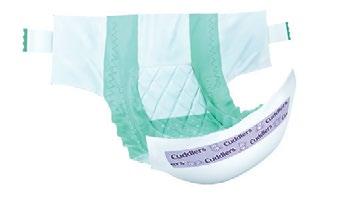




Breastmilk grants babies a measure of natural immunity against various gut infections, such as necrotising enterocolitis – a massive risk for young infants and neonates.

Malnutrition among infants is a serious healthcare concern in South Africa, with around 25% of children under 5 facing stunting. At the same time, with 13% of young children overweight, our health system carries one of the highest burdens of childhood obesity worldwide – a problem exacerbated by the prevalence of formula feeding.
Children’s healthcare experts and maternal care practitioners the world over are unanimous that breastmilk results in better healthcare outcomes for infants. Breastfeeding encouragement and support are essential strategies to combat the infant epidemics of both malnutrition and obesity.
“Yet in SA we still see one of the lowest rates of breastfeeding in Africa, falling behind countries like Kenya and Rwanda – where over 60% of babies are exclusively breastfed for their first six months of life – and lagging behind our neighbours like Botswana and Eswatini,” says Stasha Jordan, SABR’s (South African Breastmilk Reserve) Executive Director.
“Although we’re starting to see hopeful signs of breastfeeding being accepted, there are still a lot of negative stigmas surrounding it – unfounded taboos, and patriarchal attitudes that we urgently need to dismantle for our children to thrive,” she adds.
Jordan has worked on the ground with new and birthing mothers for over two decades, experiencing first-hand the phenomena that are the subjects of
medical research papers in the fields of maternity- neonatal- and obstetric care.
Human milk banking saves lives and improves health outcomes for neonates and newborns
For over 20 years the SABR’s human milk banking system has saved lives and improved health outcomes for neonates and newborns, closing the gap between the time when neonates are born and their mothers start to lactate, and as an emergency intervention when new mothers are not able to produce milk.
The SABR’s holistic methodology suggests the Kangaroo Care Method (KMC), which promotes as much skinto-skin contact between mother and baby and frequent breastfeeding supported by health care professionals and human milk bankers in the NICU, not only in post-partum hospital settings but in the context of early childhood development overall.
“This promotes optimal health for the baby and is associated with a variety of health benefits for the mother too, including stress reduction, and lower risks of breast cancer,” Jordan notes.
The SABR currently supply life-saving human breast milk for premature and sick babies to over 80 neonatal ICUs at SA hospitals, with a particular focus on the country’s most vulnerable populations, in under-resourced rural areas.
Breastfeeding is an essential poverty alleviation strategy
“But breastfeeding is not only a key childhood healthcare driver, it’s also an essential poverty alleviation strategy,” Jordan explains.
“Many South African mothers are struggling to make ends meet. Some rely solely on state support grants to feed themselves and their families. We encourage new mothers to use their resources to feed themselves and their households, rather than relying on expensive infant formula,” she adds.
Researchers have suggested that infant formulas are also infants’ first touch point with sugary highly processed foodstuffs, which may be tastier and more addictive, but far less nutritious than natural breastmilk. This may set steer them onto a challenging nutritional trajectory that is not easy to change.
Breastmilk grants babies a measure of natural immunity against various gut infections, such as necrotising enterocolitis – a massive risk for young infants and neonates.
“Breastfeeding is therefore not only cheaper for mothers and healthier for babies, but also environmentally sustainable, and a culture of
breastfeeding is closely aligned with global SDG goals,” says Jordan.
Research reveals that the world could save US$300 billion in healthcare costs from failed breastfeeding, and save the lives of some 800 000 babies, if we could make sure that babies are breastfed, especially for their first six months of life.
“In SA’s context, where mothers are often returning to homes in areas without adequate access to the electricity and clean water needed to safely prepare formula, it’s essential for mothers to try their best to breastfeed, and to reach out to us for breastfeeding support, or delivery of banked human milk in emergencies,” she asserts.
“Babies are little humans. They too have human rights, but unlike us, they don’t yet have the voice to insist on them. It’s up to all of us to be their voice.
“As with any other person, their right to eat if they are hungry trumps any other cultural or societal consideration around breastfeeding. As a society we must stop shaming mothers for breastfeeding, immediately.
As a society we must stop shaming mothers for breastfeeding, immediately.
“Rather than relegate our mothers to marginal spaces, like ‘breastfeeding rooms’ which reinscribes the stigma, we need to make sure that the entire country is a safe space, in which babies can be fed wherever and whenever they’re hungry.
“We aim to exceed the WHO’s target of a 50% exclusive breastfeeding rate for infants under six months. We believe it is feasible for 80% to 90% of all infants in this age group to be breastfed, and enjoy the myriad health and nutrition benefits it entails. Our current rate stands at around 32 %, while one in four infants are not breastfed at all,” says Jordan.
“Women who embrace breastfeeding are not just nourishing their children; they are actively providing one of the most vital community health services and are contributing significantly to the resilience and well-being of the next generation of South Africans. It’s crucial that we give them the support, respect, and encouragement they deserve.”
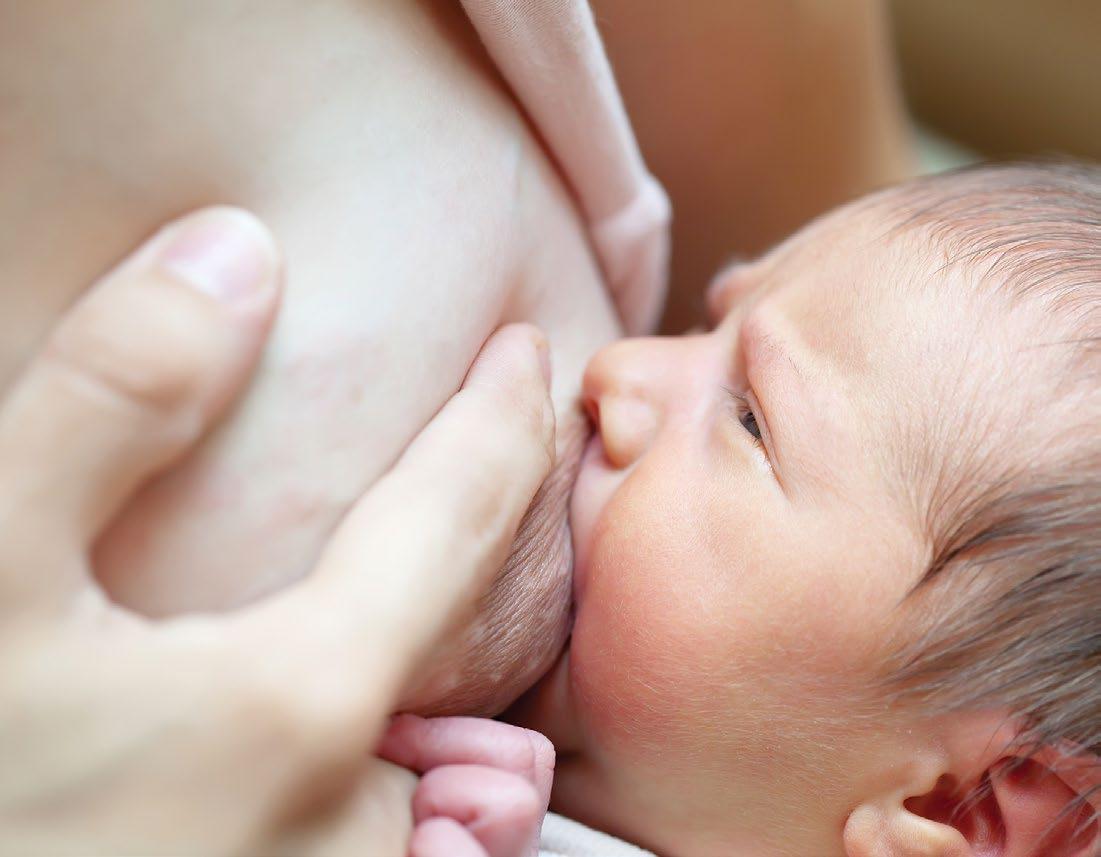
The SABR runs a human milk bank to support mothers in emergency situations whose babies need breastmilk, if or when they can’t lactate. For over 20 years, the South African Breastmilk Reserve’s (SABR) innovative human milk banking models have provided life-saving breast milk to preterm infants, bridging the gap between birth and the time when new mothers’ are able to lactate. Mothers who are in good health, already breastfeeding, and have access to a fridge and freezer can become breastmilk donors. If you’d like to become a breastmilk donor or become involved in supporting the work done by the SABR, please get in touch via the website at www.sabr.org.za


Women are an important target in curbing the spread of HIV as they may face unique challenges, including gynaecological issues, potential motherto-child HIV virus transmission, an elevated risk of cervical cancer, and possible complications related to HIV medication side effects.
According to World Health Organisation (WHO), an estimated 1.3 million women and girls living with HIV become pregnant each year. In the absence of intervention, the rate of transmission of HIV from a mother living with HIV to her child during pregnancy, labour, delivery, or breastfeeding ranges from 15% to 45%. As such, identification of HIV infection should be immediately followed by an offer of linkage to lifelong treatment and care, including support to remain in care and virally suppressed and an offer of partner services.
According to Lizeth Kruger, Dis-Chem & Dis-Chem Baby City’s National Clinic Executive, women are at the critical intersection of HIV, pregnancy, and breastfeeding, therefore access to reliable information in supporting pregnant mothers living with HIV and ensuring safe breastfeeding practices is vital.
“Exploring medical advancements, support systems, and knowledge have made it possible for expectant mothers living with HIV to lead healthier lives and protect their babies. By increasing awareness and continuing to improve healthcare and support services, we can further reduce the impact of HIV/AIDS on mothers and children, bringing us one step closer to an HIV-free generation,” says Kruger.
Here she provides important information to improve health outcomes for HIV positive mothers:


In recent years, significant progress has been made in supporting pregnant mothers living with HIV. Antiretroviral drugs (ARVs) have been a game-changer in preventing mother-to-child transmission of the virus. These medications not only protect the mother's health but also greatly reduce the risk of passing the virus to their babies during pregnancy and childbirth.
1 2 3 4

One common concern for pregnant women with HIV is whether they can continue taking ARVs. The answer is a resounding yes. Stopping ARV during pregnancy can be more harmful than beneficial. Medical professionals greatly assist and can work closely with expectant mothers to adjust their treatment plans to ensure both the mother and the baby's health during this crucial time.
PrEP, a combination of anti-HIV medication that keeps HIV-negative people from getting HIV, can be taken even after a person falls pregnant. It is, however, important to note that PrEP only protects against HIV infection, not against pregnancy or any other sexually transmitted infections.
An international study led by the University of KwaZulu-Natal's (UKZN) Professor Dhayendre Moodley confirmed in 2023 that PrEP is safe in pregnant HIV negative women. Until 2019, pregnant and lactating women in South Africa did not receive the PrEP roll-out due to a lack of safety data on its use in pregnancy.

Historically, breastfeeding posed a transmission risk for mothers living with HIV. However, with advancements, the virus, coupled with proper medication management and precautions, safe breastfeeding for mothers with HIV is now possible.
For mothers living with HIV who wish to breastfeed, it's essential to follow specific guidelines to minimise the risk of transmission to their infants. These guidelines typically involve taking antiretroviral medication, exclusive breastfeeding, and regularly consulting with healthcare providers for monitoring and support.
Mothers and healthcare professionals must work together to make informed decisions that prioritise both the mother's and baby's well-being.
Preparing for twins or multiple births is an extraordinary experience, but it comes with unique challenges and considerations. To navigate this journey successfully, you'll need to ensure you're equipped with the right essentials.

Ronald Govender, Dis-Chem Baby City FMCG Executive, says parenting multiples can be physically and emotionally demanding and recommends that parents of multiples plan as much as possible and have a checklist for key necessities, conduct thorough research, and invest in a support system of family, friends, help, and professionals.
Govender proposes some key helpful tips to make for a smoother parenting journey for parents with twins or multiples.
First things first, when you're expecting multiples, you'll need double or triple the baby wear. This basic list is helpful:
• Double up on diapers and nappy wipes as multiples go through diapers at a rapid pace. Stock up on newborn and the next size up. Look out for specials and if family and friends are hosting a baby shower, diapers are a great suggestion for a practical basic baby gift. Provide different size options lest you end up with hundreds of one size which the babies may outgrow before they are finished.
• Ensure you have multiple vests, baby grows, sleepsuits, baby receivers, and swaddling blankets to keep the babies snug and warm. Bibs are very helpful to ensure the babies do not wet their clothes during feeds.
• For breastfeeding, a twin nursing pillow can be a lifesaver. A breast pump and multiple bottles can assist in having a backup supply of breastmilk to make nighttime feedings more convenient.
Organisational tools are essential when preparing for the arrival of twins or multiple births. They help you stay on top of your babies' needs and make daily routines more manageable. Here are some organisational tools to consider:
• Look for organisers designed specifically for parents of twins or multiples. These often have double compartments or labels to keep items separate for each baby. Organisers that attach to the back of car seats or strollers are hugely helpful, providing extra storage space for on-the-go essentials like diapers, wipes, and bottles.
• A label maker or laundry markers can help you mark bottles, clothing, and storage bins with each baby's name, making it easy to identify their belongings. Labelling bottles can also assist in keeping track of the quantity of breastmilk each baby is taking in.
• Baby monitors help you keep an eye on all the babies, whether they are in separate rooms or sharing a nursery.
Multiple pregnancies often require more medical attention. Regular check-ups and consultations with clinic nurses or doctors are essential to monitor the health of both the mother and the babies.

• Invest in twin or multiple strollers designed for multiples. These strollers often have side-by-side or tandem seating options and can accommodate two or more car seats, making outings much more manageable.
• Safety is paramount, so ensure you have multiple car seats that are suitable for your babies' size and weight. Look for models that are easy to install and compatible with your stroller.
• Twins often have different sleep schedules. Opt for a cot that can accommodate two babies or have separate cribs in the same room as they grow bigger.
• You will also need other baby gear like highchairs, bouncers, and playpens that can accommodate two or more infants at once. Look for space-saving designs that still offer comfort and safety.
Expecting multiples can be physically and emotionally demanding. Building a support system is crucial to enlist the help of family and friends for household chores and childcare.
Connect with other parents of multiples through support groups or online communities and consider hiring a nanny to provide additional support.
Expecting twins or triplets can be overwhelming, so prioritise your emotional well-being by ensuring that you make an appointment with a mental health professional if you're feeling anxious or stressed. Always make time for self-care, including relaxation, exercise, and hobbies.
Most of all, enjoy the multiples. While it may sometimes be double the trouble, more often it’s double the joy.


1. Listen to your intuition
Be open to listening to advice from other parents, but remember each child is different and as a parent you know your child and will know what is best. New parents can get obsessed with certain developmental milestones – but children reach these at different times, for instance, some children start teething at three months, some at four months and so forth.
Similarly, don't worry to much about being called a "panicked parent" – if you have concerns, trust your gut and seek advice from a medical professional.
2. Accept support from trustworthy friends and family
The saying, “it takes a village to raise a child” is true! Accepting help does not make you less capable as a parent.
Having a baby, while exciting, can also be tiring. Your emotional and physical well-being is very important during this period, so if someone is willing to babysit for an hour or so you can take a break – take it!
3. Establishing a routine for your baby goes a long way
It will take some time to figure out what works best, but having a consistent feeding, sleeping and play schedule goes a long way in keeping parents and baby happy.
Also, remember as a new parent you will be incredibly busy, and chances are you are also suffering from a lack of sleep. It is a good idea to use a journal, calendar or whiteboard to help keep you organised and stay on top of things.
4. Stop comparing
Each parent and child are unique, therefore each parenting journey will be unique. We also have different lifestyles, so what works for someone else won’t necessarily work for you. Just focus on doing the best you can.
5. Routine is important, but so too is being flexible
There will be times when things don’t go according to plan. Parenthood is unpredictable so be adaptable and respond to situations as they arise.
6. Don’t forget about your partner
Babies require a lot of attention, so there’s a chance you may inadvertently neglect your partner. Remember, your partner is your support person, so communicate openly and work together as you navigate parenthood.
7. Be patient with yourself
There is no foolproof guide book for raising kids – it’s often a learn-as-you-go.
8. Embrace the moment
There will be a lot of firsts – enjoy and document all the happy times such as the first tooth, first steps, first laugh, and more. Enjoy the cuddles!
9. Setting boundaries with extended family
Extended family play a key role in your child’s life, but remember, it’s important to maintain boundaries and assert your authority as the parent. Have respectful yet open communication with extended family members about your parenting
Accepting help does not make you less capable as a parent.
10.
It’s not often spoken about, but many parents might feel a bit disconnected from the person they were prior to having a baby – for many new parents their own needs and wants have to take a back seat. It is important that while the demands of parenthood need to be met, parents should not forget about themselves. Try to set aside some “me” time to do something that brings you joy.

The reality is that your life has changed – it is okay to miss who you were, but it is also important to embrace this new journey and the new version of yourself that you are becoming.

Make it playful for your little ones while taking good care of their hair. Garnier Ultimate Blends brings the world of Disney into your little one’s bath time to make shampooing and detangling a playful adventure.
Tame the mane! For mermaid hair!
Apricot & Cotton Flower
The ultra-gentle kids haircare range helps tackle the tangles. Blended with natural ingredients and extracts of Apricot and Cotton Flower, leaves their hair smelling fresh and fruity.

Cherry & Soft Almond
The hypoallergenic formula doesn’t sting the eyes and gently removes knots and tangles. The blend of Cherry & Soft Almond leaves the hair soft.

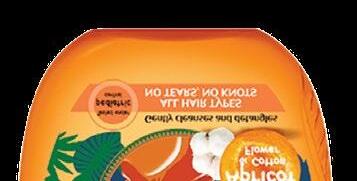




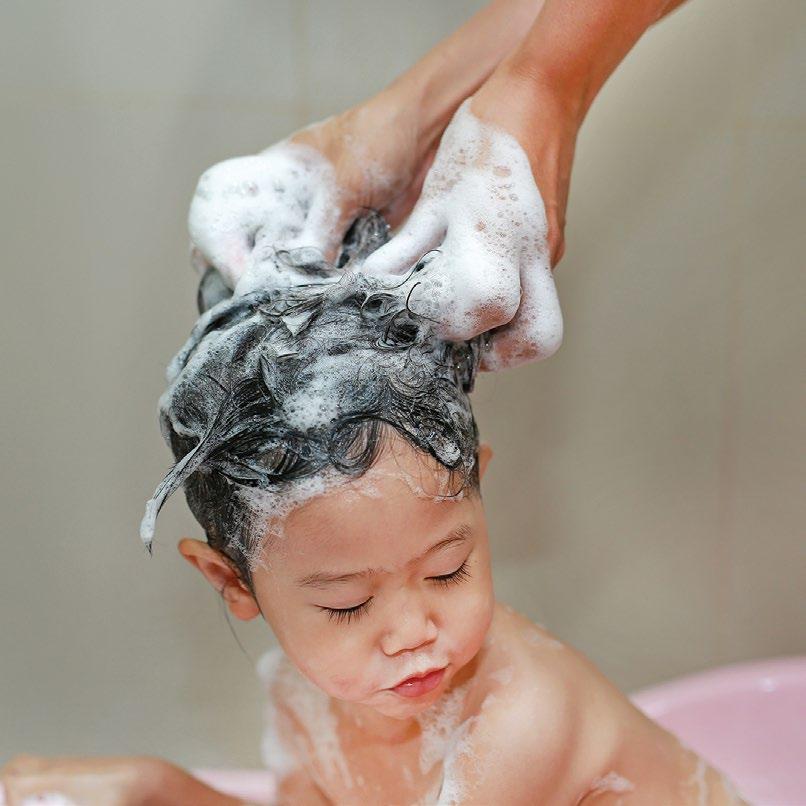
This blend of rice-cream and oat milk makes hair look super-soft, shiny and tangle free. No tears, ultra-gentle kids haircare blend.
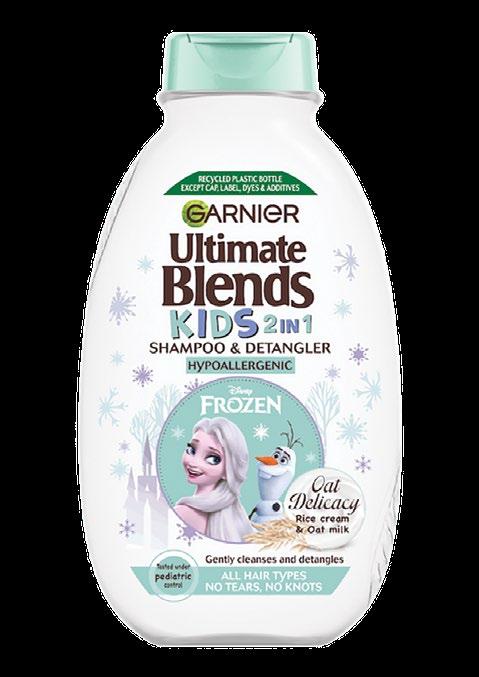




Try distracting kids with their favourite bath toys. If the child is occupied and still, parents can properly wash their hair.
Create a little jingle song about washing hair to make it a fun activity.
Wet your child’s hair first before applying shampoo.
Pour shampoo into the palm of your hand (or if your child is old enough you can pour some onto their palm). It can be a bit jarring for some kids to feel shampoo trickling down their scalp.
If your child is old enough and loves to help out, let them help massage the shampoo gently into the scalp.
Becoming a parent brings with it feelings of happiness, worry, and confusion, as well as a growing awareness of the impact our choices have on the world our children will inherit.
During this time of heightened environmental consciousness, many new parents are finding themselves drawn to the principles of eco-friendly living. But where to start?
Even though wanting to be an ecofriendly parent is a noble thought, it can create more pressure than expected. The idea, as with everything, is to start with baby steps.
“One thing that many new parents might notice is the influx of baby items that they need or receive, which can contribute to environmental waste. To try and combat this, there's a growing trend among eco-conscious parents to embrace upcycling – a creative and sustainable way to breathe new life into baby items,” comments Bronwyn Ragavan, brand manager for Milton.
Upcycling can bring with it creative thinking, fun activities for the family and also a clear conscience that you are contributing to the environment’s wellbeing. Ragavan suggests the following upcycling ideas.
• Baby clothes often hold sentimental value, making them perfect items for upcycling projects. Turn outgrown onesies and adorable patterns into quilts, blankets, or even stylish clothing accessories for your little one.
• Use your Milton sterilising fluid not only for the sterilising of bottles and toys, but as a sterilising spray for your kitchen counters, or to sterilise water
and make it suitable for drinking. Milton kills 99% of bacteria and germs and can be used throughout the house during your daily clean.
• Create a unique and personalised nursery by upcycling baby items into charming decor pieces. Old baby mobiles can be repurposed into wall art, while baby food jars can become adorable storage containers for small items like cotton balls or hair accessories.
• Convert your baby's crib into a functional play area or desk for older children. Remove one side of the crib, add a chalkboard or whiteboard, and voila – you have a new and sustainable piece of furniture that grows with your child.
• Turn worn-out or neglected toys into DIY projects. A fresh coat of paint or some creative embellishments can transform old toys into imaginative new playthings, reducing the need for buying new ones.
• Instead of buying new accessories, repurpose old baby clothes into headbands, bibs, or booties. This not only reduces waste but also adds a personal touch to your child's wardrobe.
• Preserve memories by creating memory jars or shadow boxes using items like baby shoes, hospital bracelets, and onesies. These become beautiful keepsakes that tell the story of your child's early days.
Embracing upcycling not only minimises environmental impact but also allows you to infuse your home with creativity and uniqueness.
By upcycling baby items, you contribute to a sustainable future for your child while enjoying the process of giving new life to cherished possessions. Let your imagination run wild and turn the ordinary into extraordinary on your journey toward eco-friendly parenting.


Relieves stiff and painful joints
Beneficial for diabetics
Improves blood circulation
Beneficial to the cardiovascular system and high blood pressure
Improves skin elasticity
Boosts immune function
Improves mood and concentration
Reduces ADD symptoms
Improves brain messaging function
Encourages healthy sleep patterns

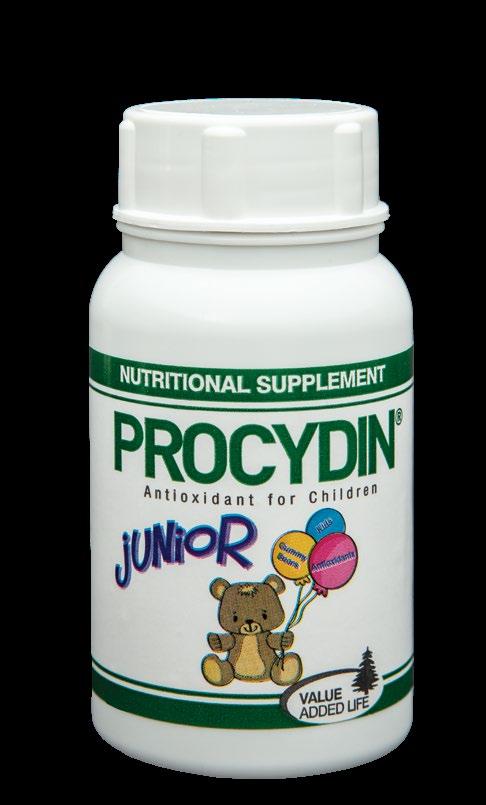



There are many demands on young learners mentally and physically, but parents and caregivers can help the little ones put their best foot forward by considering foot health.
“School years are a crucial time for a child’s development and, as they grow, maintaining foot health becomes even more important,” explains Lynsey Hammond, MD of Kroko, manufacturers of quality footcare products.
“Many don’t realise that foot health is connected with posture and alignment, and taking care of the feet will protect the spine and neck in later years.”
Hammond says time spent travelling to and from school, as well as time at school itself, puts a lot of pressure on young feet.
“In South Africa, many young children have to travel far distances to get to and from school – either barefoot or in ill-fitting shoes – as well as playing on the hard ground for sports or on the playground. They are also required to sit at school desks which means proper foot health for correct posture. We’ve put together useful foot care tips for caregivers to help their children.”
1. Choose the correct-sized shoes and socks
Many schools require children to wear socks and school shoes throughout the day, and if the shoes are the incorrect size, it can be detrimental to feet.
When a child wears the wrong-sized shoes, they can suffer from blisters, pressure sores, ingrown toenails, and deformities like hammer toes – not to mention future posture problems.
Sock size, too, can impact their overall discomfort. Children’s feet are constantly growing, so it’s important to measure the feet fairly regularly. If a child is suffering from feet challenges, there is Kroko SkinFilm for minor cuts and scratches, and HeelFix for dry and damaged heels.
2. Keep the feet dry
In South Africa’s hot summer, and with feet trapped in socks and school shoes, there is a risk of sweating. Make sure children’s feet are kept clean and dry by changing socks where needed and airing out shoes, and they should dry between toes after washing.
If left wet, there is a risk of fungal infections, athlete’s foot, or corns. They
can also suffer from smelly feet, which can cause self-esteem issues. Kroko Foot Powder or Kroko Shoe & Foot Odour spray is a great option if a child suffers from excessively sweaty feet as it keeps feet hygienic and fresh.
3. Let those feet breathe
Encouraging active children to rest is not always easy, but if they’ve had a busy day at school on the playground and sports field, then it’s important to let the feet rest and heal.
Pushing it too far can result in pain and discomfort. However, by resting those feet, children will be ready for another day of adventures, and a life of healthy living! It’s also important for children to go barefoot for some of the time.
There are thousands of nerve endings in each foot and walking barefoot on wet grass or soft sand helps to develop new neurological connections. Just ensure they’re walking on surfaces that are safe for bare feet and not too hot.
Designed for foot hygiene
KROKO’s pharmaceutically formulated foot care products are designed for foot hygiene, the treatment of corns and calluses, and cracked heels. The product range also includes remedies for warts, cracked skin, minor cuts and scratches. For more information, visit www.kroko.co.za
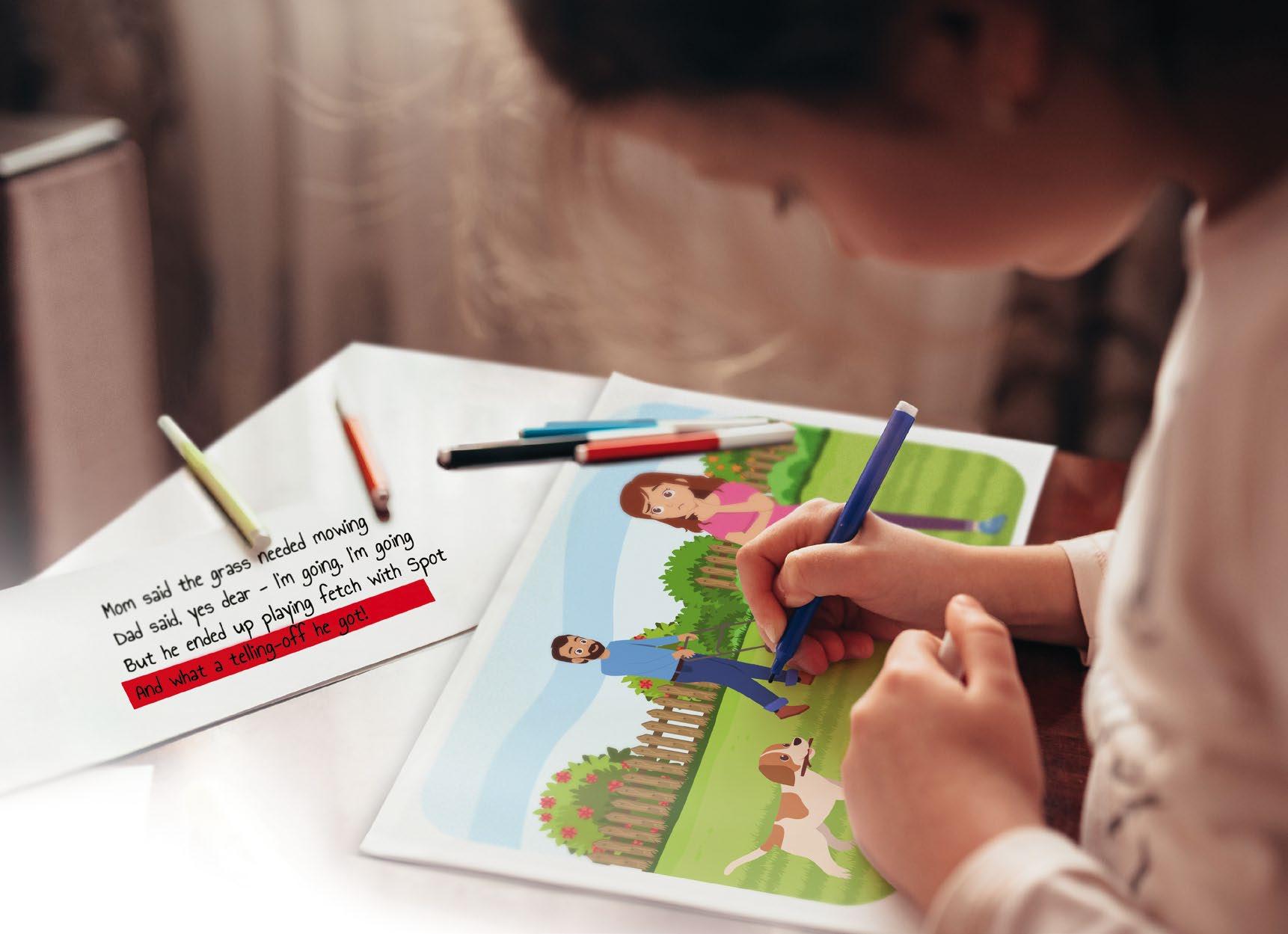


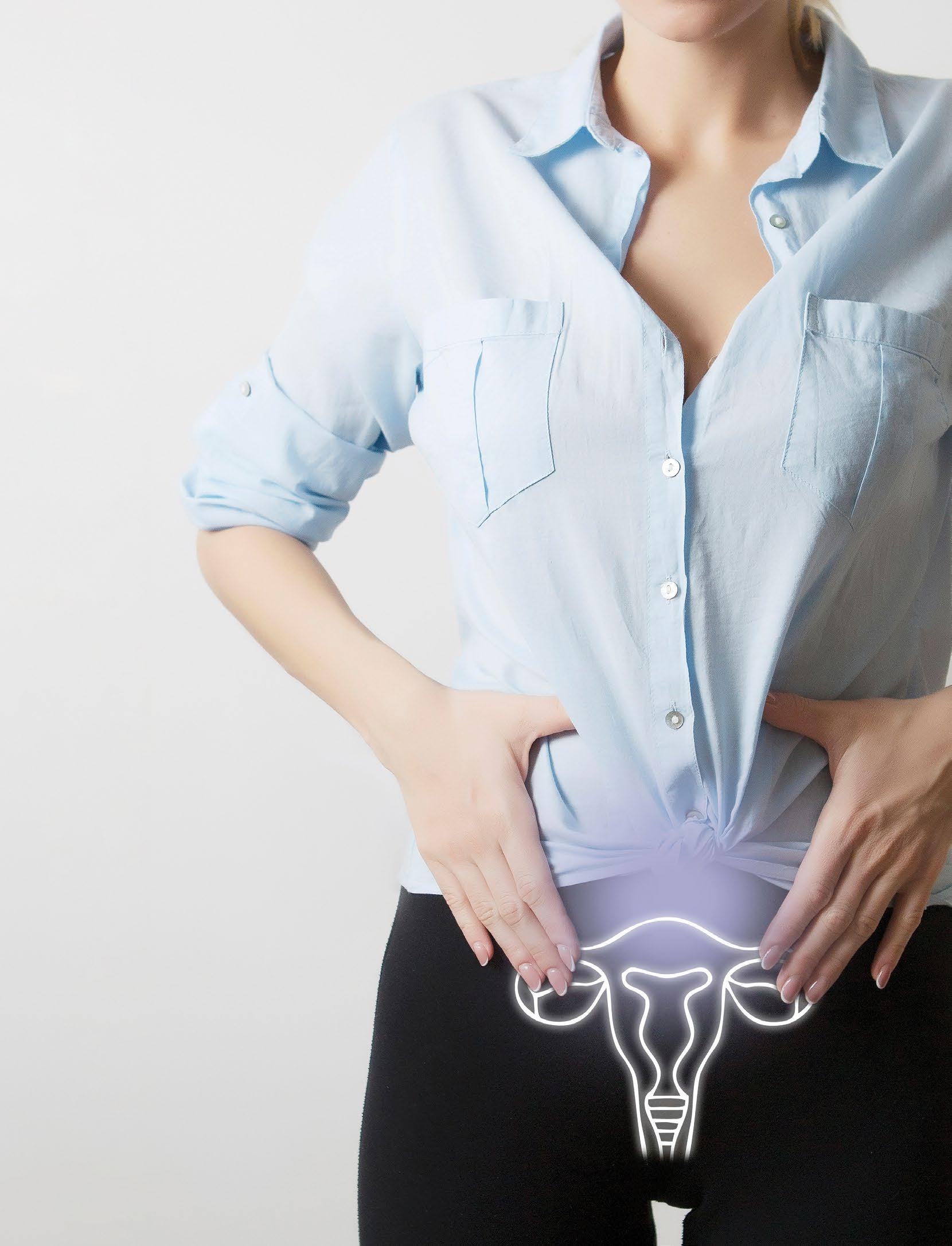
Bladder infections are a common occurrence around the globe, but South Africans seem to be struggling more so.
According to a study published in the Journal of Health & Biological Sciences[1], South Africa ranked highest for urinary tract infections (UTIs) among eight other sub-Saharan African countries. Overall, the prevalence of UTIs in sub-Saharan Africa is 32.12%, with the highest prevalence (67.6%) recorded in SA, followed by Nigeria (43.65%) and Zambia (38.25%).
In SA, UTIs are common, especially among women. Factors like compromised immunity, diabetes and poor personal hygiene – exacerbated by poor sanitation, limited access to clean water and inadequate healthcare infrastructure increases a woman’s risk of contracting UTIs.
Elani van Zyl, Critical Care Product Manager for Pharma Dynamics, says 2530% of women between the ages of 20 and 40 experience recurrent infections.
“Getting two UTIs in six months or three in a year is considered having recurrent UTIs. Bladder infections (cystitis) occur when tiny microbes travel up the urethra and into the bladder, causing an uncomfortable and painful infection in the lower urinary tract. While easily treatable, UTIs can spread into your upper urinary tract and cause a host of problems, which is why a proper diagnosis early on is important,” she explains.
She points out that anatomically, women are more prone to UTIs since women have a shorter urethra than men. This shorter distance between the bladder and the external environment makes it easier for bacteria to travel up the urethra and reach the bladder, leading to infections.
“Sexual activity can also introduce unwanted bacteria into the urinary tract since the urethra in women is much closer to the anus than in men, which makes it easier for bacteria to wind up in the bladder.
“Mechanical contraception –spermicides, diaphragms and cervical caps – can also increase the risk of UTIs by altering the balance of bacteria in the vagina or by causing irritation to the urinary tract.”
Prostate problems can increase men’s risk of UTIs
In men, prostate problems can increase their risk of UTIs.
Van Zyl says a swollen prostate can affect different parts of the urinary system making it harder for urine to flow through the narrow tube. This can cause inflammation, which increases the risk of bacterial infection, leading to cystitis or prostatitis in men.
While more than 80% of UTIs are caused by E.coli, other bacteria, such as Klebsiella pneumoniae and Staphylococcus aureus are also responsible for the disease, although in a lesser degree.
She notes while the best treatment for UTIs are antibiotics. Preventing urinary tract infections is crucial in the fight
against antibiotic resistance and to ensure that these medications remain effective for treating bacterial infections.
“Preventing bladder infections or UTIs involves adopting healthy lifestyle habits and practices that reduce the risk of bacterial growth and infection in the urinary tract,” Van Zyl adds.
Stay hydrated: Drinking plenty of water helps flush bacteria out of the urinary tract, reducing the risk of infection. Aim for around 6-8 glasses of water a day unless otherwise advised by a healthcare professional.
Maintain good hygiene:
Urinate when needed:
Women should wipe from front to back after using the bathroom to prevent the spread of bacteria from the anus to the urethra. Keeping the genital area clean and dry helps prevent bacterial growth.
Don't hold urine for long periods as this can allow bacteria to multiply in the urinary tract. Empty your bladder regularly, especially after sexual intercourse.
Practice safe sex: Using condoms during sexual intercourse can help reduce the risk of introducing bacteria into the urinary tract. Urinating before and after intercourse may also help flush out bacteria.
Avoid irritating products:
Wear breathable clothing:
Certain feminine hygiene sprays, douches, or scented products may irritate the urethra and increase the risk of UTIs. Opt for mild, unscented products instead. Also change nappies or incontinence pads promptly once soiled.
Tight-fitting clothing, especially synthetic materials, can create a warm and moist environment that encourages bacterial growth. Wear breathable cotton underwear to help keep the genital area dry.
Boost your immune system: A healthy immune system helps fight off infections. Maintain a balanced diet, exercise regularly and get adequate sleep to support your immune system.
Manage underlying conditions:
Conditions like diabetes can increase the risk of UTIs. Properly managing underlying health conditions can help lower the risk of infections.
“Practicing good hygiene, staying hydrated and following preventive measures can help reduce the risk of UTIs in both men and women,” says Van Zyl.
If you frequently experience UTIs or have specific risk factors, it's advisable to consult with a healthcare professional, who can provide personalised guidance and recommendations to help prevent recurrent UTIs.
Psoriasis, a chronic skin condition affecting millions worldwide, has long been a topic of concern in the medical community, in that no cure has been discovered, although there are various options available to lessen its symptoms.1By Ahmed El Hofy, General Manager for South Africa for The Janssen Pharmaceutical Companies of Johnson & Johnson
Characterised by hardened skin and itchy, scaly patches, psoriasis is a result of the immune system mistakenly attacking healthy skin cells.2

The interplay between genetics, environment, and ethnicity
While the exact cause remains elusive, researchers have delved into the intriguing interplay between genetics, environment, and ethnicity. There have also been studies undertaken as to disparities in its prevalence and severity among different racial and ethnic groups.3
The bottom line is that psoriasis knows no boundaries – it can affect anyone, regardless of race or ethnicity. Research does suggest, however, that certain ethnic groups might be more susceptible to this condition than others.4
Historically, psoriasis has been considered to be less common in people of African, Hispanic, and Native American descent, in comparison to Caucasians. Psoriasis appears to be most common in the northern countries of Europe, with Norway topping the list. East Asia appears to have the lowest incidence.5
However, it's essential to note that these trends can change over time because of various factors, such as lifestyle changes, environmental factors, and genetic interactions.
More recent studies are suggesting that psoriasis might be underdiagnosed in African populations because of differences in healthcare access, underreporting, or even misdiagnosis in lower-income districts.6
Additionally, the genetic diversity within Africa is vast, so the umbrella term of
“African” is not a precise one when it comes to the accurate reporting of genetic differences. Healthcare professionals and researchers continue to investigate in a more focused fashion in the quest to provide better insights into the condition's prevalence among different populations.6
The reasons behind the ethnic disparities between psoriasis patients are complex and multifaceted. Genetic predisposition does indeed play a significant role, with specific genetic markers associated with psoriasis having been identified in different population groupings. For instance, variations in the HLA-C gene have been linked to a higher risk of psoriasis in Caucasians, whereas genetic factors such as the PSORS1 locus are more prevalent among individuals of South Asian descent.7
Environmental factors have also been reported to exacerbate these genetic predispositions. Climate, lifestyle, and socio-economic status all contribute to the intricate web of psoriasis susceptibility. Studies have shown, for example, that psoriasis cases rise in colder, less sunny regions.8
This is possibly the result of reduced exposure to sunlight; a natural source of Vitamin D, which plays a role in skin health. Lifestyle factors such as smoking, excessive alcohol consumption, and stress have also been linked to the onset and severity of psoriasis.8 These factors are often allied to one’s cultural environment.
REFERENCES

Limited access to healthcare, education, and resources, particularly among marginalised communities, can lead to delayed or mistaken9 diagnoses, and therefore the inadequate management of symptoms. Addressing these disparities requires a holistic approach that combines medical intervention, education, and awareness campaigns that are specifically tailored to different ethnic groups.
to debunk myths and misconceptions about psoriasis Raising awareness about psoriasis is a crucial first step, and culturally sensitive educational initiatives can debunk myths and misconceptions, thus encouraging affected individuals to seek medical help without fear of social stigma.
Furthermore, both governmental and private medical bodies should encourage research that focuses on understanding the unique genetic and environmental factors contributing to psoriasis within different population groupings. By
adopting this more specific and targeted approach, scientists will hopefully get closer to developing therapies that are tailored to – and therefore more effective for – populations of specific genetic profiles. This way, outcomes can be improved for patients across diverse populations.
In the quest for equality in healthcare, we must acknowledge and address the disparities in psoriasis prevalence and severity among different ethnic groups. By fostering a collaborative environment that includes healthcare professionals, researchers, policymakers, and communities, we can bridge the gap in psoriasis care.
Together, we can ensure that no individual falls outside of the metaphorical radar, and that everyone, regardless of ethnicity,10 receives the support and treatment that he or she requires to manage this chronic condition effectively.
1 WebMD. Psoriasis Treatments: How to Get Rid of Psoriasis. https://www.webmd.com/skin-problems-and-treatments/psoriasis/understanding-psoriasis-treatment
2 Cleveland Clinic. Psoriasis. https://my.clevelandclinic.org/health/diseases/6866-psoriasis
3 WebMD. Who Get Psoriasis? Age, Sex, Race, and Ethnicity. https://www.webmd.com/skin-problems-and-treatments/psoriasis/who-gets-psoraisis
4 New Life Outlook Psoriasis. Psoriasis and Ethnicity: How Ethnicity Impacts Psoriasis Development. https://psoriasis.newlifeoutlook.com/psoriasis-and-ethnicity/
5 Very Well Health. How Many People Have Psoriasis? https://www.verywellhealth.com/how-common-is-psoriasis-5220875#toc-where-is-psoriasis-most-common
6 Dermatology Times. Psoriasis Strategies in Skin of Color. https://www.dermatologytimes.com/view/psoriasis-strategies-in-skin-of-color
7 Function Frontiers in Genetics. “HLA-C: evolution, epigenetics, and pathological implications in the major histocompatibility complex”. https://www.frontiersin.org/journals/genetics/ articles/10.3389/fgene.2023.1206034/full
8 Mayo Clinic. Psoriasis. https://www.mayoclinic.org/diseases-conditions/psoriasis/symptoms-causes/syc-20355840
9 WebMD. What’s Behind Plaque Psoriasis Misdiagnoses in People of Color? https://www.webmd.com/skin-problems-and-treatments/psoriasis/features/poc-misdiagnosis-plaque-psoriasis
10 Black Health Matters. Black Skin, Missed Diagnosis: The Psoriasis Problem We Need to Talk About. https://blackhealthmatters.com/black-skin-psoriasis/
Epilepsy is one of the most common long-term neurological conditions in the world, yet it remains largely misunderstood by many. For people with this often invisible burden, the stigma surrounding epilepsy can significantly exacerbate the challenges they already face.

Not all seizures are necessarily epileptic...
“No one should be afraid to discuss necessary aspects of their health with family and employers, but tragically, the stigma surrounding epilepsy leaves too many people facing this medical condition alone,” says Mande Toubkin, Netcare’s General Manager of trauma, transplant, and corporate social investment.
Epilepsy affects one in every 100 people in South Africa, representing approximately half a million South Africans based on a total estimated population of 52 million.
“Untreated or inadequately managed, epilepsy can lead to brain injuries or other consequences requiring emergency treatment, and we are grateful to be partnering with Epilepsy SA to amplify awareness,” says Toubkin.
“We also need the public, young and old, to be aware that any seizure lasting more than three minutes should be regarded as
From musicians Lil Wayne and Sir Elton John to Roman emperor Julius Caesar, French emperor Napoleon Bonaparte, and sports legend Jonty Rhodes –people with epilepsy have distinguished themselves in diverse fields.
“There are different types of epilepsy and various types of seizures caused by abnormal electrical impulses in the brain that can present differently depending on the area of the brain affected,” says Dr Naidoo.
“Epilepsy is a non-communicable disease, which means it cannot be passed from one person to another. Some people with epilepsy experience
a medical emergency, whether the person has epilepsy or not, it needs urgent medical assessment and treatment.”
Some misperceptions about epilepsy are potentially very harmful
Dr Vanmala Naidoo, a neurologist who practices at the Netcare Mulbarton Hospital epilepsy monitoring unit adds, “Some of the misperceptions are potentially very harmful, and we all have a responsibility to be better informed and more compassionate when it comes to epilepsy.”
“Ignorance about epilepsy not only fuels the threat of social stigma, but it also means fewer epileptics are correctly diagnosed and treated, allowing them to be empowered to live optimally with their condition.
“Seizures do not always present as noticeable fits or convulsions; in some cases, the person may simply dissociate for a few seconds and carry on with
their conversation or activities without knowing anything happened,” Dr Naidoo says.
A seizure is defined as an abnormal surge in the brain's electrical impulses, causing several possible symptoms depending on which area of the brain is affected.
“Not all seizures are necessarily epileptic, and the best way for doctors to understand what is going on and how to treat the person is through careful close observation in a multidisciplinary dedicated epilepsy monitoring unit,” she says.
An electroencephalogram (EEG) records the electrical impulses in the person’s brain, during wakefulness and sleep to identify how often the person has seizures, even those types of seizures that might otherwise be difficult to notice. This careful monitoring helps the neurologists and neurophysiologists to confirm the diagnosis and tailor treatment for this complex set of conditions.
convulsive, or grand mal seizures, characterised by the body stiffening accompanied by uncontrolled muscle jerking, while other types of seizures can be extremely subtle.”
Dr Naidoo points out that not all seizures are attributable to epilepsy but may be pseudo-seizures caused by severe anxiety.
“In some cases, the person is unaware that they are having seizures, and they may experience symptoms that they wouldn’t associate with epilepsy, such as chronic headaches or migraines, memory loss, sleep disturbances, and fatigue,” she says.
“Some people living with undiagnosed epilepsy are initially investigated for conditions including mood or behavioural disorders or certain kinds of cognitive impairment including dementia, when in fact they are living with undiagnosed –and therefore untreated and uncontrolled – epilepsy,” she adds.
“If you have any concerns that you or someone you know may have undiagnosed epilepsy, it is extremely important to seek medical attention because Sudden Unexpected Death in Epilepsy (SUDEP) is far less likely to occur in people who have been properly diagnosed and are professionally assisted in managing their condition.”
Would you know what to do if you found someone having a grand mal seizure? Be prepared with this list of Dos and Don’ts.
• Loosen constrictive clothing around the person’s throat.
• Remove any sharp or hard objects, including furniture near the person, that might cause injury.
• Remove spectacles if the person is wearing them.
• Reassure any bystanders who may have gathered and are upset by what they’re witnessing and ask them to give the person space while keeping a close eye on the person having the seizure.
• Position the person so that they lie on their side in the recovery position, if possible, so that any fluid can drain from their mouth.
• Call an emergency medical services provider, such as Netcare 911 on 082 911, if the person having a seizure is pregnant.
• Call an emergency medical services provider if the seizure lasts longer than three minutes.
• Do not panic.
• Do not try to put your fingers or any object into the person’s mouth during the seizure.
• Do not hold the person down or restrain them.


Once the seizure is over
Check that the person is breathing normally. At this stage, you may need to help clear any obstruction from the person’s mouth with your finger and put the person in the recovery position. This means laying the person on their side, with their mouth angled downwards so that any fluid or vomit will drain out of the mouth instead of blocking the airway.
• Allow the person to rest.
• People are frequently confused or drowsy after a seizure or have a severe headache. Reassure them and stay with them until they are fully alert and recovered.
• Only offer them food or drink once they are fully alert.
• Check the person has not sustained any injuries during the seizure.
To find out more about the services offered through Netcare hospitals and other of the Group’s facilities, visit www.netcare.co.za
With winter fast on the way, we once again prepare ourselves for flu season.
During colder temperatures in autumn and winter, the flu virus multiplies a lot faster and flourishes in your body once breathed in. Since the air is also drier when it is cold, germs hang in the air for much longer.
Make KuraFlo Hypertonic Saline solutions part of your cold and flu prevention this year.
KuraFlo Hypertonic saline draws fluid from the lining of the nose, sinuses, larynx and bronchi to help wash out those trapped bacteria and virus particles. The salt can also help dehydrate the bacteria and virus cells and kill them before they cause a respiratory infection.
Also try our NEW anti-inflammatory, antibacterial & antiseptic KuraFlo Skin Healing Cream now available from selected Clicks stores. Try it and see the difference.
• Skin infections • Skin Irritations • Scar treatment • Cuts & Abrasions
• Insect bites • Nappy rash
KuraFlo – Helping you Breathe Better and now Feel Better too!


Early screening, treatment and education can improve the quality of life for children and adults with Autism Spectrum Disorder (ASD), but a lack of awareness and trained professionals has limited lower-income communities in South Africa and the world.
Although statistics in South Africa are scarce, a study conducted in the Western Cape noted an increase of 76% in children with autism in schools. Their findings are in line with the 2023 Centre for Disease Control and Prevention report which notes that approximately 1 in 36 children in the United States is diagnosed with ASD, higher than the previous 2018 estimate that found a prevalence of 1 in 44 (2.3%).
The South African Society of Psychiatrists (SASOP) calls for better understanding and an increase in health and education sector resources that can improve the lives of those affected by autism beyond only those who can afford to pay for services.
Dr Kedi Motingoe, a child psychiatrist and member of SASOP, says those who present with autism are unnecessarily stigmatised and isolated by their developing peers, parents and teachers.
“Autism, in affluent societies, is usually diagnosed by the time the child is 3 to 4 years old. Symptoms present early in the child’s development and behaviours such
as the way they learn, speak, play and behave in a social context. In reality, though these children are more often undiagnosed and ruled as ‘difficult, dangerous, bad-mannered, uncontrollable, a savant, introverted and the result of poor parenting’.”


Autism is diagnosed three to four times more often in boys than girls and is a developmental disorder linked to early brain development. Although the causes are not clear, genetics, environmental factors and complications during birth do play a role.
“Autism is not a psychological, emotional or behavioural disorder, but rather a brain-based, neuropsychiatric condition that requires treatment and support. Those with autism experience difficulties in social situations, with verbal and non-verbal communication, and have an under or over sensitivity for sounds, smell and touch,” explains Dr Motingoe.
“Most parents become concerned due to difficulties fitting in at nursery school and behavioural issues such as tantrums. Over-stimulation is common in children with autism, and if they are not able to communicate how they are feeling it can result in aggressive behaviour such as biting.”
She says that later diagnosis in high functioning autism, either in school due to difficulties in learning or relationships with peers or teachers, is portrayed as poor academic achievement compared to their actual intellectual capabilities.
“We cannot over-emphasise the role of education in assisting children to develop social and communication skills to cope with the world around them. Those on the mild spectrum of autism can comfortably be included in mainstream education, provided there is adequate recognition of their needs. Those with more severe autism are more responsive in specialised schools where intensive intervention is applied.”
Little awareness of, or disinterest in others, difficulty in interacting socially, lack of eye contact
Social interactions are predicated mainly on the child’s particular interests.
Distress is caused by changes in routine or environment, especially extreme distress for no apparent reason.
Non-typical patterns of play, preferring to play alone, lack of imaginative play, repetitive behaviours or unusual habits such as rocking, flapping hands or constantly spinning objects.
Gross or fine motor skill development that doesn’t match the usual developmental milestones.
Rigid thinking style that may be without humour.
Hypo or hypersensitivities in sensory modalities such as visual stimuli and pain, a dislike of being touched or held, or a sense of touch, taste, smell, sight or hearing that seems extra-sensitive, or less sensitive than usual; may result in very rigid food preferences.
Delayed or non-typical development of speech and language, or the child appears not to hear.
Difficulties holding the perspective of another.
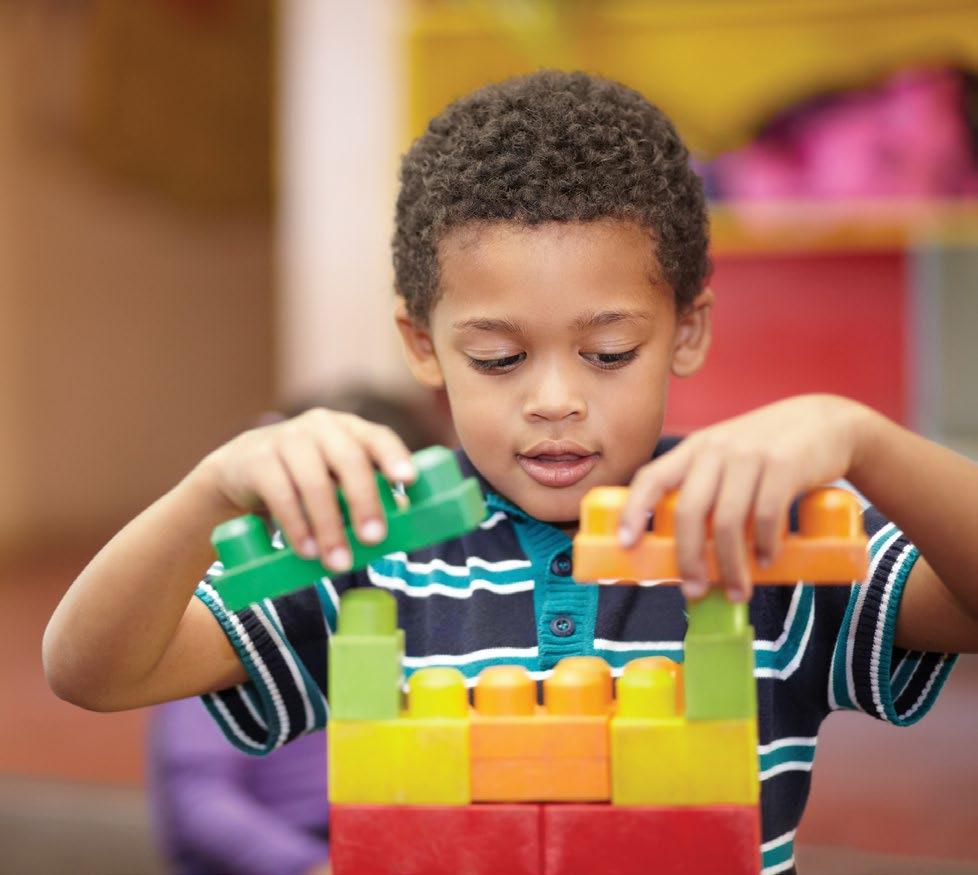
Early intervention is vital to maximise the child’s development and to reduce negative consequences such as depression, poor self-esteem, family breakdown or increased stress for the parents.
Parent and sibling support is crucial, and treatment generally starts with interventions that coach parents and caregivers on debunking the myths of simply having an unruly child, to rather focus on how to engage with the child, knowing what to expect and how to support them.
Occupational therapy, especially for sensory integration and speech therapy
interventions, improves communication, cognitive and social skills, reduces distress for the child and supports positive behaviour changes.
Specialised education depending on the severity and presence of intellectual impairment, should be considered and for those with higher functioning, a supportive mainstream environment
where the parents and the teachers work holistically to support the child.
Although there is no specific medication for autism itself, medication may be prescribed for other conditions that exist alongside such as attention deficit hyperactivity disorder (ADHD), epilepsy, anxiety or other neurological conditions.
Autism South Africa (ASA) advocates for greater awareness of autism, to educate the public, educators and policymakers; and offers information resources, support and training for parents, caregivers and community organisations working with autism. Their practical, easy-to-understand guide to autism is published in seven of South Africa’s official languages. Find out more at www.aut2know.co.za

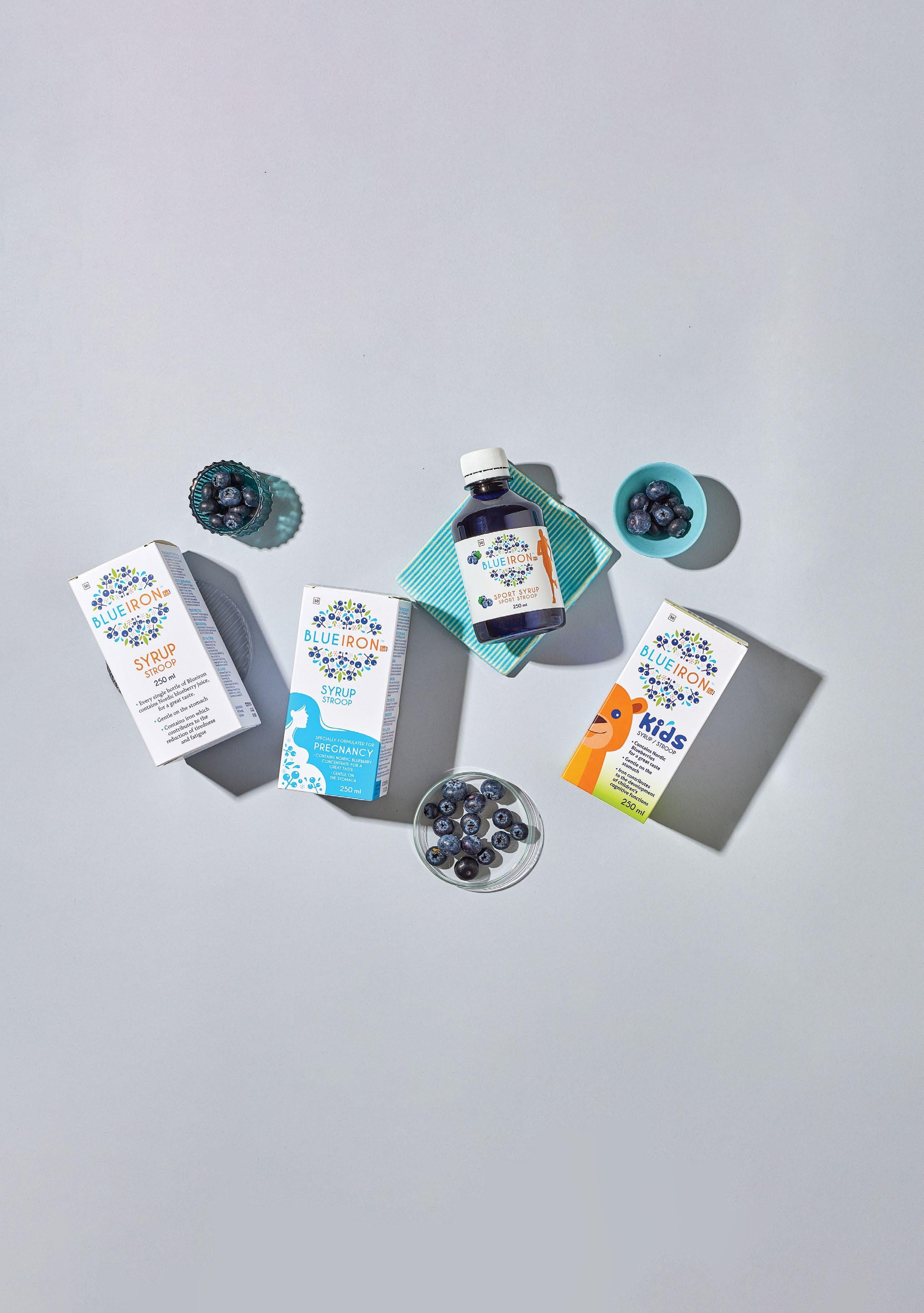
A young paramedic who suffered a herniated or ‘slipped’ intervertebral disc is back to active duty and saving lives again after becoming the first person to undergo a minimally invasive endoscopic discectomy at Netcare Pinehaven Hospital recently.
“Aslipped, herniated or bulging disc describes the same condition, where the fibrocartilage spacers between a person’s spinal vertebrae deteriorate and begin pressing on the nerves – it can be debilitating,” says Dr Darsi Boungou-Poati, a neurosurgeon specialising in endoscopic techniques.
The back pain that had been gnawing at Kevin Eaton for the past two years suddenly came to an excruciating crescendo as he was preparing to leave for work one day. The 28-year-old Netcare 911 intermediate life support medic and father of a busy young toddler was left barely able to walk.
“My fiancé drove me to the emergency department at Netcare Pinehaven Hospital where I was given some pain relief, and an x-ray was done with a






referral for an MRI scan the following day. The MRI showed that I had an L4L5-S1 vertebrae disc herniation pressing on the nerves going to my legs and my
alone. Unfortunately, over 10 years as a paramedic took a toll on my back.
“I was worried about how this might affect my vocation for saving lives, my livelihood, and my ability to care for my young daughter. When discussing the options with Dr Boungou-Poati, I told him that I needed to get back on my feet quickly and that whatever option we decided on should be a sustainable solution.”
than the traditional lumbar discectomy,” Dr Boungou-Poati says.


“Kevin’s concerns about having surgery were understandable because the traditional approach to the repair procedure would mean a week in the hospital, at least six weeks off work, and a very gradual return to normal activities that impact the person’s productivity for a long time,” Dr Boungou-Poati says.
Endoscopic discectomy is a gamechanger

“The endoscopic discectomy is a gamechanging option for those who require surgery and want to get back to life soon.”
Up and about in a much shorter time
Eaton says when he awoke from the surgery, he had to lie still for six hours but was then able to get up and walk around. He was discharged soon after with instructions to wear a soft back brace for three weeks.
“The physiotherapist showed me some home stretches to help with the back muscles, and I was cleared for duty again on 1 December. I spent a few weeks getting back into the swing of things at the Netcare 911 Roodepoort base, and now I am back on active duty, where I belong, saving lives,” Eaton says.

“The endoscopic discectomy is much less invasive and minimises many of the usual risks associated with open surgery because there is no need to cut through muscle or expose a large surgical site. The time in theatre is greatly reduced, and the operation can even be performed under local anaesthetic if the patient is comfortable with the sounds of the instruments while we are working,” he explains.
“A small puncture of 1.5cm is made in the skin, and an endoscope with a light and a tiny camera are carefully inserted to allow us to see exactly where the damaged intervertebral disc is pressing on the nerves. I remove only the pieces causing the pain, so most of the disc remains to fulfil its crucial spacing and shockabsorbing function.
“Often, patients can be discharged home on the day of the procedure without the need to be admitted overnight, such is the safety of this keyhole approach. A person can often resume light duties just a week later with much less post-operative pain

“My back pain had made me worry that I was reaching my shelf-life as a medic, and this procedure, no matter how small it may sound, meant the world to me –both as a father to a young child and in my vocation of being a medic, which I’ve invested more than 10 years of my life in, and I couldn’t imagine doing anything else.”
Eaton is grateful for his new lease on life and everyone who supported him, including his Netcare 911 management and colleagues.
“I cannot thank Dr Boungou-Poati enough for the second chance he gave me and the wake-up call to take better care of my back. I also want to thank my physiotherapist and the amazing team who looked after me at Netcare Pinehaven Hospital. A big thank you to my fiancé for her love and caring throughout – we are now ready to carry on with our lives together,” Eaton concludes.

A study has shown that taking a low-dose iron supplement daily may reduce the burden of exercise and improve fatigue, stress, and performance in athletes.By Natroceutics SA
The study, published in the Contemporary Clinical Trials Communications journal, involved 51 male and 42 female athletes receiving either 3.6 milligrams of iron or a placebo once a day for four weeks while maintaining a training exercise regime, daily lifestyle, and food diary.
Participants had to conduct self-reported questionnaires and biochemical assessments focusing on mood, stress, and sweat behaviours. Results showed a significant reduction in feelings of exhaustion, negative mood, and exercise-associated stress in the men and women of the iron group.

















Iron deficiency is the most prevalent nutritional disorder worldwide
Iron is an essential mineral that the body needs for growth and development. It is found in every cell and assists in the transport of oxygen from the lungs to the rest of the body including the muscles. The body also needs iron to make some hormones. A lack of iron can lead to symptoms of fatigue, weakness, shortness of breath, dizziness, headaches, reduced immunity, and cognitive function.
Iron deficiency is the most prevalent nutritional disorder worldwide and if left unaddressed, can lead to anaemia. It is common in athletes, affecting up to 17% of male and 50% of female endurance athletes due to increased iron demand. Iron loss of up to 70%, and reduced iron absorption are often triggered by exercise-induced inflammation. The body can lose iron through sweating, and increased urination, which is tied to higher water intake and menstruation.
Children and young people who are iron deficient may develop learning difficulties, delayed neurological development, social withdrawal, a lack of focus, and a short attention span.
The link between sports performance and iron regulation in athletes
Growing research has shown a link between sports performance and iron regulation in athletes. Athletes who compete in high impact, running, or endurance sports, young adults, female athletes, and those who follow a vegan or vegetarian diet need to pay particular attention to their iron levels. Without enough iron, the body can't use oxygen properly to produce energy which can impair an athlete’s capacity to train, perform, and recover.
A study has shown that iron is best absorbed in the morning on an empty stomach within 30 to 60 minutes of completing a workout. While most
people should be able to get all the iron they need by eating a varied balanced diet, modern diets are often filled with nutrient-depleted, over-processed convenience foods.
The intake of iron-rich foods is vital
Health expert, Vanessa Ascencao says that athletes push their bodies physically every day which requires increased nutrients such as iron to achieve peak performance and optimised health. Women who struggle with heavy periods, pregnant women, and those who follow a vegan or vegetarian diet are also at risk for iron deficiency.
“The body does not produce iron naturally, so the intake of iron-rich foods such as lean red meat, chicken, liver, and oily fish is important. So too is eating leafy green vegetables such as spinach, kale, broccoli and brussel sprouts, legumes, brown rice, nuts, seeds, and avocadoes.
“What you eat and when you eat it can affect iron absorption so avoid tea (not including herbal teas), coffee, and alcohol as these can reduce iron absorption. Include Vitamin C rich foods such as citrus fruits, sweet peppers, and tomatoes with iron-rich foods as these can triple the absorption of iron,” says Ascencao.
“Adding an iron supplement can promote faster recovery and help bounce back from the effects of daily training including muscle or bone injury. Try high-quality, naturally sourced, Spatone Iron Rich Water, clinically proven to have higher absorption of up to 40%, is gentle on the stomach, and causes fewer side effects commonly experienced with standard iron supplements such as cramps and stomach irritation.
“Spatone contains 5 milligrams of iron in one convenient-to-use daily dose sachet, helping to release energy and supporting a healthy immune system and cognitive function,” adds Ascencao.
“Women need more iron than men especially those of childbearing age as their iron requirement needs are almost double that of men due to menstrual blood loss. Iron helps to preserve many vital functions in the body, including energy and focus, gastrointestinal processes, the immune system, and the regulation of body temperature.
“The benefits of iron often go unnoticed until a person is not getting enough. Research shows that keeping healthy levels of iron can lead to healthy ageing and a longer lifespan.” Ascencao concludes.



Gastro-intestinal problems affect all of us at some time or another. Diarrhoea, constipation, bloating and the like are often caused by over-indulgence or eating something that doesn’t agree with us, and quickly clear up of their own accord.
Gastro-intestinal problems a ffect all of usat some time or another. Diarrhea, constipation, bloating andthe like are often causedby over-indulgence or e ating somethingath t doesn’t agree with us , and quick ly clear up of their own accord.
Gastro-intestinal problems a ect all of us at some time or another Diarrhoea, constipation, bloating and the like are often caused by over-indulgence or eating something that doesn’t agree with us, and quickly clear up of their own accord.
Gastro-intestinal problems affect all of us at some time or another. Diarrhea, constipation, bloating and the like are often caused by over-indulgence or eating something that doesn’t agree with us, and quickly clear up of their own accord.
Gastro-intestinal problems a ffect all of usat some time or another. Diarrhea, constipation, bloating andthe like are often causedby over-indulgence or e ating somethingath t doesn’t agree with us , and quick ly clear up of their own accord.
Beneficial bacteria in the gut are known to:
❖ Beneficial bacteria in the gut are known to:
Beneficial bacteria in the gut are known to:
Beneficial bacteria in the gut are known to:
Gastro-intestinal problems a ect all of us at some time or another. Diarrhoea, constipation, bloating and the like are often caused by over-indulgence or eating something that doesn’t agree with us, and quickly clear up of their own accord.
Beneficial bacteria in the gut are known to:
• prevent and stop diarrhoea or constipation
Beneficial bacteria in the gut are known to:
One of the greatest challenges for human wellbeing in the 21st centur y will be to focus on the advantage of having a healthy colon and therefore a good immune system – this is where
One of the greatest challenges for human wellbeing in the 21st centur y will be to focus on the advantage of having a healthy colon and therefore a good immune system – this is where
Distressing and unpleasant conditions such as these can, however, become chronic – and that can be caused by a bacterial imbalance in the intestines.
One of the greatest challenges for human wellbeing in the 21st century will be to focus on the advantage of having a healthy colon and therefore a good immune system – this is where probiotics can play a significant role.
Distressing and unpleasant conditions such as these can however become chronic – and that can be caused by a bacterial imbalance in the intestines.
• Prevent and stop diarrhea or constipation
• prevent and stop diarrhoea or constipation
• Prevent and stop diarrhea or constip ation
• aid digestion and break down toxins
• Prevent and stop diarrhea or constip ation
• aid digestion and break down toxins
• Aid digestion and break down toxins
• prevent and stop diarrhoea or constipation
• Aid digestion and break down toxins
• produce vitamins B12 and K
• produce vitamins B 12 and K
Distressing and unpleasant conditions such as these can, however, become chronic – and that can be caused by a bacterial imbalance in the intestines
Distressing and unpleasant conditions such as these can however become chronic – and th at can be causedby a bacterial imbalance in the intestines.
Some groups of bacteria can cause acute or chronic illness, but another group of bacteria offers protective and nutritive properties. Imbalances between the two can lead to a number of unpleasant conditions such as diarrhoea, constipation, bloating, IBS, allergies, poor digestion and poor nutrient absorption. In laboratory investigations, some strains of LAB (Lactobacillus bulgaricus) have demonstrated anti-mutagenic effects thought to be due to their ability to bind with heterocylic amines, which are carcinogenic substances formed in burnt red meat.
• Produce vitamins B12 and K
• aid digestion and break down toxins
A good probiotic can be beneficial in the following ailments:
• Produce vitamins B12 and K
• Aid digestion and break down toxins
following ailments:
• stimulate the immune system.
• produce vitamins B 12 and K
Distressing and unpleasant conditions such as these can, however, become chronic – and that can be caused by a bacterial imbalance in the intestines.
Distressing and unpleasant conditions such as these can however become chronic – and th at can be causedby a bacterial imbalance in the intestines.
Some groups of bacteria can cause acute or chronic illness, but another group of bacteria offers protective and nutritive properties. Imbalances between the two can lead to a number of unpleasant conditions such as diarrhea, constipation, bloating, IBS, allergies, poor digestion and poor nutrient absorption In laborator y investigations, some strains of of LAB (Lactobacillus bulgaricus) have demonstrated anti-mutagenic effects thought to be due to their ability to bind with heterocyclic amines, which are carcinogenic substances formed in burnt red meat.
Probiotics are critical for normal digestion and for defence against infection.
Probiotics are critical for normal digestion and for defence against infec tion.
Bac teria in the gut are k nown to:
Bacteria in the gut are known to:
• Stimulate the immune system
• Stimulate the immune system
• Enhance the mucosal barrier
• Enhance the mucosal barrier
• Stimulate the immune system
• Enhance the mucosal barrier
• Aid digestion and break down toxins
• Aid digestion and break down toxins
• Inhibit adherence of pathogens
Inhibit adherence of pathogens
• Aid digestion and break down toxins
• Inhibit adherence of pathogens
Somegroups of bacteria can cause acute or chronic illness , but anothergroup of bacteria o ffers protective and nutritive properties . Imbalances between the two can lead to a number of unpleasant conditions such as diarrhea , constipation , bloating , IBS, allergies, poor digestion and poor nutrientabsorption . In laboratory investigations , some strains of of LAB (Lactobacillus bulgaricus) h ave demonstrated anti-mutagenic effects thought to be due to theirability to bind with heterocyclic amines , which are carcinogenic substancesformed in burnt red ame t.
• Stimulate the immune system
• Diarrhoea or constipation
• stimulate the immune system.
• Diarrhoea or constipation
following ailments:
• Produce vitamins B12 and K
• Stimulate the immune system
• stimulate the immune system
• Diarrhoea or constipation
• Stimulate the immune system
• Bad breath, gas & bloating
• Bad breath, gas & bloating
Just as all humans are not the same, all probiotics are not the same. Insist on QuatroFlora®, with clinical documentation available on the health benefits of the strains it contains.
Probiotics are critical for normal digestion and for defence against infec tion. Bac teria in the gut are k nown to:
Some groups of bacteria can cause acute or chronic illness, but another group of bacteria o ers protective and nutritive properties Imbalances between the two can lead to a number of unpleasant conditions such as diarrhoea, constipation, bloating, IBS, allergies, poor digestion and poor nutrient absorption. In laboratory investigations, some strains of LAB (Lactobacillus bulgaricus) have demonstrated anti-mutagenic e ects thought to be due to their ability to bind with heterocylic amines, which are carcinogenic substances formed in burnt red meat
Tel: 041 3781189
Tel: 084 561 1144
Tel: 084 561 1144
The two most important groups of friendly intestinal flora, or probiotics, are Lactobacilli – found mainly in the small intestine, and Bifidobacteria – found mainly in the colon.
• Allergies, rhinitis, lac tose intolerance
• Bad breath, gas & bloating
• Allergies, rhinitis, lactose intolerance
• Allergies, rhinitis, lac tose intolerance
Some groups of bacteria can cause acute or chronic illness, but another group of bacteria o ers protective and nutritive properties Imbalances between the two can lead to a number of unpleasant conditions such as diarrhoea, constipation, bloating, IBS, allergies, poor digestion and poor nutrient absorption. In laboratory investigations, some strains of LAB (Lactobacillus bulgaricus) have demonstrated anti-mutagenic e ects thought to be due to their ability to bind with heterocylic amines, which are carcinogenic substances formed in burnt red meat.
sales@betapharm.co.za
sales@betapharm.co.za
sales@betapharm.co.za
The two most important groups of friendly intestinal flora, or probiotics, are Lactobacilli – found mainly in the small intestine, and Bifidobacteria – found mainly in the colon.
The two most importantgroups of friend ly intestinal flora , or probiotics , are Lactobacilli – found main ly in the small intestine , andBifidobacteria – found main ly in the colon.
Just as all humans are not the same, all probiotics are not the same Insist on QuatroFlora®, with clinical documentation available on the health benefits of the strains it contains.
Just as all humans are not the same, all probiotics are not the same. Insist on QuatroFlora® with clinical documentation available on the health benefits of the strains it contains.
Just as all humans are not the same , all probiotics are not the sameInsist on QuatroFlora ® with clinical documentation available on the health benefits of the strains it contains.
Somegroups of bacteria can cause acute or chronic illness , but anothergroup of bacteria o ffers protective and nutritive properties . Imbalances between the two can lead to a number of unpleasant conditions such as diarrhea , constipation , bloating , IBS, allergies, poor digestion and poor nutrientabsorption . In laboratory investigations , some strains of of LAB (Lactobacillus bulgaricus) h ave demonstrated anti-mutagenic effects thought to be due to theirability to bind with heterocyclic amines , which are carcinogenic substancesformed in burnt red ame t.
The two most important groups of friendly intestinal flora, or probiotics, areLactobacilli– found mainly in the small intestine, andBifidobacteria– found mainly in the colon
www.betapharm.co.za
www.betapharm.co.za
www.betapharm.co.za
Probiotics are live micro-organisms that, when consumed in adequate amounts, have strong health benefits.
The two most importantgroups of friend ly intestinal flora , or probiotics , are Lactobacilli – found main ly in the small intestine , andBifidobacteria – found main ly in the colon.
Just as all humans are not the same, all probiotics are not the same Insist on QuatroFlora®, with clinical documentation available on the health benefits of the strains it contains.
Just as all humans are not the same , all probiotics are not the sameInsist on QuatroFlora ® with clinical documentation available on the health benefits of the strains it contains.
• Gastroenteritis and playschool diseases in young children
• Gastroenteritis and playschool diseases in young children
• Gastroenteritis and playschool diseases in young children
The two most important groups of friendly intestinal flora, or probiotics, areLactobacilli– found mainly in the small intestine, andBifidobacteria– found mainly in the colon
Probiotics are live micro-organisms that, when consumed in adequate amounts, have strong health benefits
Probiotics are live micro-organisms which, when consumed in adequate amounts, have strong health benefits.
Probiotics are live micro-organisms ,which when consumed in adequate amounts , have strong health benefits .
Probiotics are live micro-organisms ,which when consumed in adequate amounts , have strong health benefits .


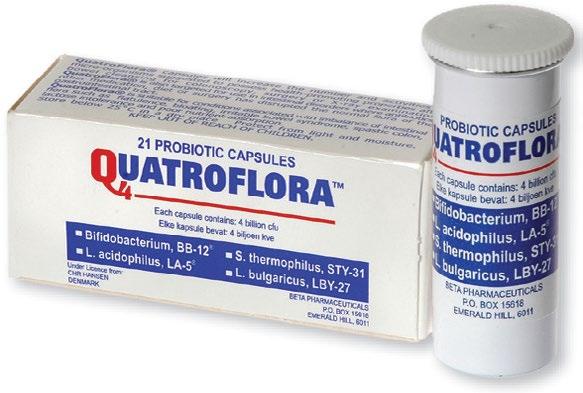
QuatroFlora ™
QuatroFlora
Probiotics are live micro-organisms that, when consumed in adequate amounts, have strong health benefits.
LA-5®, Lactobacillus bulgaricus, LBY-27, Streptococcus thermophilus, STY-31
QuatroFlora™ capsules contain the following strains of probiotic bacteria for improving gastro-intestinal health and well-being: Bifidobacterium, BB-12®, Lactobacillus acidophilus, LA-5®, Lactobacillus bulgaricus, LBY-27, Streptococcus thermophilus, STY-31
041 378 1189
041
378 1189


Faced with an abundance of ‘the perfect body’ messaging across social media and marketing platforms, many individuals may find themselves engaging in excessive behaviours in pursuit of perceived perfection. This potentially has harmful effects on self-image and overall health.


Peta-Lyn Foot, manager at the Centre of Psychotherapy Excellence (COPE) and an occupational therapist at Netcare Akeso Crescent Clinic in Randburg, notes that while the realities of modern media are built into our environment and are therefore difficult to escape, we do have control over the amount of time we spend consuming this content.
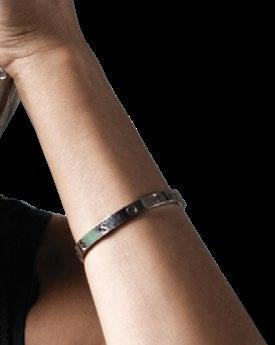
“General expectations around body aesthetics are largely informed by ideals portrayed in the media and social media, which, in many cases, create the benchmark for self-worth. Often the imagery that is used is idealistic and unattainable, and when viewed repeatedly on an ongoing basis, can wear away at a healthy body image.
“Teens, in particular, are at a vulnerable stage of development where they are still establishing their sense of identity and often base much of their self-worth on their appearance. A strong desire to meet these elusive and unattainable standards can result in eating disorders and other behaviours masquerading as healthy practices,” Foot says.
“This may include restrictive diets, for example, where certain food groups are removed completely. This is a dangerous practice and not advisable, particularly in younger populations where all food groups are needed for healthy growth and development. Limiting food groups may compromise cognitive ability and prevent full development potential, even in those who appear to be high achievers.”
According to Foot, there is a trend among younger age groups towards excessive exercising matched with restrictive diets to encourage weight loss, or as is more often the case among males, to bulk up and become very muscular and toned.

“The quantity and variety of videos created by selfproclaimed experts, for example sharing tips and tricks for weight loss and increased muscle definition, reinforce this behaviour.
“We are also seeing an increase in individuals developing obsessive behaviours around the idea of ‘clean’ eating or eating only foods that are completely natural. While foods that are free of processed ingredients have multiple health benefits, a dogmatic mindset about this can lead to orthorexia – a disproportionate adherence to a diet made up of these foods. This obsession with eating only the healthiest or purest-seeming foods can lead to rejection of a normal, balanced diet to the point where an individual’s overall health begins to be impacted,” Foot adds.


Building an enduring sense of self-worth
Foot says that the prominence of the health and fitness industry has simply become part of daily life, and selfreflection is key to having a realistic and honest view of your own beliefs around physical appearance and health-related behaviours.
“Even adults struggle to cultivate a sense of happiness within themselves, and it can be challenging to identify problematic behaviour in yourself or a loved one. This is because different people have different standards for personal physical appearance as well as varying definitions of physical attractiveness.
“However, anything excessive or extreme is unhealthy. For example, commitment to daily exercise has numerous benefits but if someone who is not a professional athlete
is dedicating hours daily to exercise and is constantly thinking and planning around their fitness regime, this may indicate a mental health concern.
“A balanced approach is what we encourage. It may not be possible to love every aspect of yourself equally –as individuals we all have strengths and weaknesses. However, focusing on the parts of yourself that you like rather than comparing yourself with others gives you something steady of your own to hold
onto. This is a mindset that takes practice, but it forms part of building better mental health, which is crucial for your overall wellbeing.
“Developing self-awareness will also enable you to identify triggers that make you feel bad about yourself. Once you know what these triggers are, you can avoid them as far as it may be possible. A proactive and constructive approach to building your own sense of self-worth will go a long way to maintaining a healthy body image all year round, even when you are faced with seasonal triggers like seemingly playful campaigns around beach body ideals.”

When in doubt, seek help
When in doubt, seek help Foot explains that communication is the first step in reaching a loved one whose attitude towards physical appearance concerns you.
“Often the person in question may not see their behaviour as problematic but a gradual and consistent approach to communicating your concerns can be effective – even if at first you receive the brush-off. Staying silent usually results in worse outcomes in the long run, so keep trying different approaches to communication until you get through.
“If you think that you or a loved one may be at risk of an eating disorder or other mental health concern associated with physical appearance, consult your therapist or healthcare practitioner whom you trust for advice on how to get help. In-patient care at a mental health facility may not be required, but do not delay in seeking help before any such mental health concern reaches an advanced stage,” she concludes.
Netcare Akeso operates a network of private inpatient mental health facilities and is part of the Netcare Group. Netcare Akeso provides individual, integrated and family oriented treatment in specialised inpatient treatment facilities, as well as certain outpatient services, for a range of psychiatric, psychological and substance use conditions. Please visit www.akeso.co.za or contact info@akeso.co.za for further information.



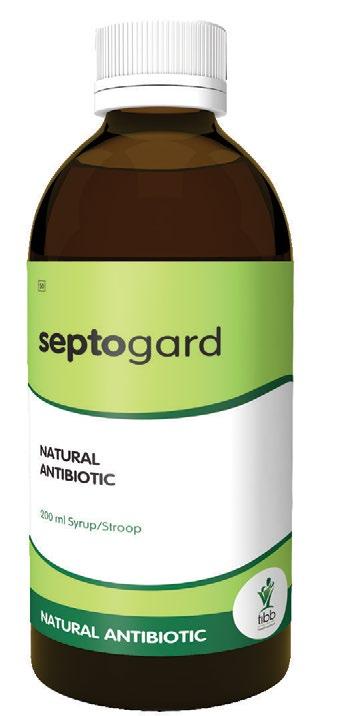





4 1
Selula Skincare Experience
luxurious care with our antenatal belly oil, a rich blend of omega 3, 6, 9 and vitamins A and E, designed to nourish your skin as your bump grows and your breasts blossom. This nutritive formula is packed with essential fatty acids, amino acids, and antioxidants, offering proactive support in preventing and treating existing stretch marks, enhancing suppleness, comfort, and hydration for elevated skin health. www.selulaskincare.co.za
2
Safety 1st Healthcare Kit
Contains 11 basic healthcare items you need to care for a newborn’s basic healthcare needs. It includes a digital thermometer with case, nasal aspirator, soft toothbrush, medicine dropper, five alcohol wipes, emergency contact card and a travel case.
www.medela.co.za
3
Earthsap Foam Bath (Kids) –Raspberry Ripple
500ml
Fruity, fragrant and fun bubble bath. Earthsap Raspberry Ripple Kids Foam Bath smells delightful, with oils of raspberry and juniper berry. It’s also enriched with vitamin E to nourish young skin. The formula is SLS-free and biodegradable – a delight for your family that’s also safe for the earth.


5
www.faithful-to-nature.co.za
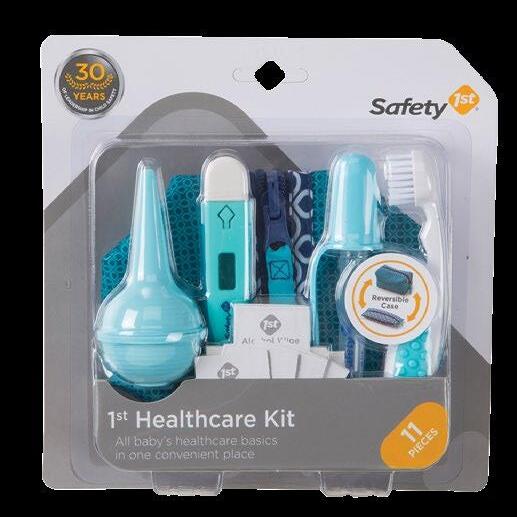

Happy Teether Crackers
An easily dissolving cracker made with ancient grains, organic fruits and veggies. It is tasty for baby, easy on their gums and encourages selffeeding. All the Happy Family Organics baby products are gluten-free, Kosher, certified organic, and contain no GMO or high fructose corn syrup, artificial food colourants or flavourants.
www.medhealthsup.com
Infantino Musical Mobile Carousel
This musical mobile allows you to soothe your baby before they fall asleep. It has a mirror (14cm) and four adorable characters (lion, butterfly, giraffe and bird), which rotate slowly. The music box with wind up mechanism (no battery), covered in lovely fabric, can be removed to take anywhere. This mobile attaches to most cots. Available at Clicks, Makro Online, Takealot and www.medhealthsup.com

Philips Avent Electric Bottle
Warmer
6
This Philips Avent baby bottle warmer warms milk in just three minutes. It warms evenly by circulating the milk continuously as it warms, so hot spots are prevented. Easy to operate, it features a handy defrost setting and can also be used to warm baby food. Available at Baby City, Woolworths, Babies R Us, Dischem and online at www.takealot.com or www.medhealthsup.com
Ecofoliant Skin Polish
This gentle yet effective dry facial exfoliator is formulated with a blend of superfoods including baobab, oats, rice, and cranberry extracts. This powerful combination expertly removes dead skin cells, impurities, and dirt, revealing a healthy, glowing complexion. Regular use has numerous benefits for skin including boosting circulation while balancing pigmentation, acne and uneven skin tone. It also stimulates collagen production, which is crucial for proactive ageing and encourages fresh skin renewal.
www.eccodiva.co.za
7
8


Suikerbossie Naturals
100% Natural Baby Bum Balm is made with marigold, frankincense, lavender, chamomile, beeswax and coconut oil. It moisturises and protects sensitive skin, promotes healing and prevents nappy rash. www.suikerbossienaturals.co.za

Natura Rescue is your ultimate first aid for a range of emotions for the whole family, offering serenity in every tablet or drop. The exceptional blend of natural ingredients, trusted by South Africans since 1966, serves as a calming companion during times of shock, distress and grief, and sleeplessness due to worry. Picture tranquillity in a bottle, ready to embrace you when you need it most –without causing drowsiness. Available at Takealot, Dischem, Clicks & Wellness Warehouse. www.natura.co.za

Biomedcan CBD Pain Balm
Biomedcan CBD Skin Pain Balm is a skin cream used to relieve pain, with zero THC included. A blend containing aloe ferox, lavender, tea tree and with the maximising effect of hemp-extracted CBD, treats joint and muscle pain, dry skin, irritated skin, inflamed skin and infected skin. It is also great for bites, burns, rashes and stings. Available at Wellness Warehouse, selected Spars and Pick n Pay stores, and health shops nationwide and online at www.faithful-tonature.co.za
www.biomedcan.co.za


Sudocrem
Is clinically proven to soothe and protect your baby’s delicate skin and soothes sore or irritable skin, and helps ease pain and irritation. A water-repellent base forms a protective barrier, helping to stop any irritants (urine and faeces) coming into contact with the skin. Available at Clicks, Dis-Chem and other major retailers/pharmacies. www.sudocrem.com
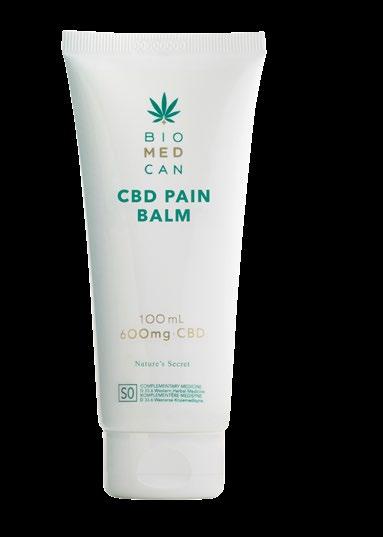
NutriPure Kids
Vitamin C
Vitamin C contributes to the normal functioning of the nervous system, normal energy-yielding metabolism, and the reduction of tiredness and fatigue. One NutriPure gummy contains 80mg of Vitamin C, which is 100% of the daily recommended allowance. Available exclusively at Dis-Chem stores. www.nutripure.co.za
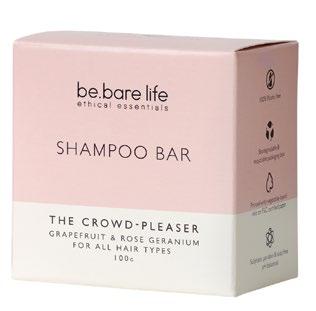
Bar
This bar contains notes of rose geranium balanced with a hint of zesty citrus oils. The purifying properties of both grapefruit and lime helps to cleanse the hair and control natural oil production on the scalp. The plant-based butter and moisturising castor oil serve to soften, hydrate and promote healthy hair growth.
www.bebarelife.com

The beauty industry continues its transformative journey towards cleaner, more sustainable practices. Consumers are increasingly conscious of the products they use, demanding transparency, efficacy, and environmental responsibility.
By Nicole Sherwin, Founder Eco Diva Natural Superfood SkincareThis year, the clean beauty movement is reaching new heights, with innovative trends that redefine beauty standards. Let's delve into the top clean beauty trends of 2024 and explore what to watch out for.
Clean beauty in 2024 is not just about external beauty but also about holistic wellness. Brands are incorporating wellness practices into their formulations, recognising the interconnectedness of skin health and overall well-being.
Expect to see skincare products infused with adaptogens, CBD, and other holistic ingredients that address not only external concerns but also internal balance. This trend reflects a shift towards a more comprehensive approach to beauty that resonates with consumers seeking a harmonious connection between their bodies and the products they use.
More ethical brands will also be launching gut health ingestibles to assist with healing the skin from the inside out.
Clean skincare trends have evolved to prioritise not only the health of the skin but also ethical considerations. With an increasing awareness of animal welfare, animal rights and environmental sustainability, consumers are gravitating towards products that are PETA-approved, vegan, and cruelty-free as well as 100% natural plant-based ingredients.
These labe ls signify that the products are not tested on animals and do not contain any animal-derived ingredients, appealing to those seeking ethical and environmentally conscious options.
As more people prioritise these values in their purchasing decisions, PETA-approved, vegan, and cruelty-free skincare products have become staples in the quest for clean and conscientious beauty routines.
Eco-conscious consumers are looking beyond cruelty-free and vegan labels; they're seeking beauty products from brands committed to achieving carbon neutrality.
From sustainable sourcing to eco-friendly, even biodegradable packaging, beauty brands are embracing holistic approaches to minimise their environmental footprint.
Keep an eye out for companies implementing innovative strategies, such as carbon offset programs and renewable energy sources, to make beauty routines guilt-free for both consumers and the planet.
The cannabis plant, often misunderstood, emerges as a skincare saviour in 2024. Packed with cannabinoids, particularly CBD, it boasts anti-inflammatory and antioxidant properties, effectively addressing issues like pigmentation, dehydration, acne, and scarring.
Cannabis balms hydrate the skin deeply,
promote cell regeneration, and balance oil production. The plant's natural richness in omega-3 and omega-6 fatty acids enhances skin health, leaving you with a radiant and revitalized complexion.
The de-puffing revolution is in full swing, which taps into the potential of botanical ingredients renowned for their anti-inflammatory prowess.
Look for serums infused with chamomile, marula, baobab, Argan oil, macula extract, and aloe vera, each playing a crucial role in calming irritated skin and reducing
puffiness. These natural wonders work synergistically, offering a gentle and effective solution to inflammation, leaving your skin refreshed and rejuvenated.
Butt facials: the ultimate body pampering experience
Butt facials transcend the conventional, offering a holistic approach to body care. Incorporating ingredients like sea salt, dark sugar, coffee grounds, and nourishing oils, these treatments exfoliate, hydrate, and promote circulation, unveiling smoother and firmer skin.
Embrace the unconventional as butt facials redefine self-care, promising an indulgent and transformative experience beyond the face.

Anti-ageing ingredients from plants: nature's fountain of youth
Discover the anti-aging wonders of plant-based ingredients that redefine beauty standards. Ingredients like retinol from rosehip seed oil stimulate collagen production, while antioxidant-rich extracts from squalene, green tea, baobab and pomegranate fight free radicals.
Plant-derived hyaluronic acid ensures deep hydration, plumping the skin and diminishing the appearance of fine lines. Embrace the natural approach to aging gracefully.
Toxin-free colour cosmetics: beauty without compromise
Swap conventional cosmetics for toxinfree alternatives that enhance your natural beauty without compromising your health.
Look for foundations enriched with nourishing ingredients like argan oil and aloe vera, cacao, maca, and chia, providing coverage while caring for your skin. Lip and cheek tints infused with plant-based pigments and moisturizing agents offer a vibrant and healthy glow, ensuring your makeup routine becomes a celebration of both beauty and well-being instead of a toxic wasteland.
Active ingredients like shea butter, Vitamin E, and jojoba oil take centre stage in hand facials, addressing signs of aging and nourishing the delicate skin on your hands.
These formulations promote collagen production, reduce age spots, and protect against environmental stressors, ensuring your hands age gracefully alongside your radiant face.
Minimal packaging meets maximum impact with solid skincare. Ingredients like coconut oil, shea butter, and essential oils take the spotlight in shampoos, conditioners, body butters, and soaps.
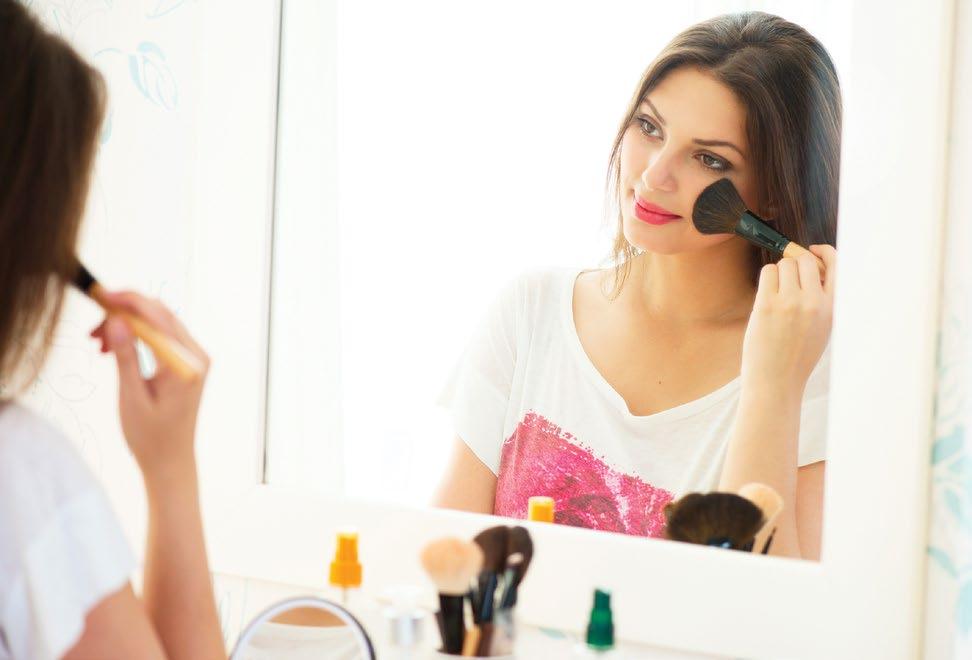

These products not only contribute to sustainable beauty practices but also deliver potent, natural benefits, leaving your skin and hair nourished, revitalised, and ready to face the world.
Packaging has long been a concern in the beauty industry, and 2024 is witnessing a surge in biodegradable and compostable alternatives.
Brands are recognising the need to reduce single-use plastics and are investing in packaging solutions that break down harmlessly in the environment. From plant-based plastics to mushroom-derived materials, the clean beauty movement is reshaping the way products are presented, ensuring that sustainability extends beyond the formula itself.
While these clean beauty trends signal positive change in the industry, consumers should remain vigilant. Greenwashing, the deceptive practice of presenting products as more environmentally friendly than they are, is a concern.
To navigate this, look for third-party certifications, transparent ingredient lists, and eco-friendly packaging. Stay informed about a brand's commitment to sustainability and its efforts to minimize its carbon footprint.
In 2024 the clean beauty landscape is evolving in exciting ways, embracing sustainability, innovation, and holistic wellbeing. As consumers, let's celebrate these positive strides while staying informed and holding brands accountable for their promises. The future of beauty is not only clean but also conscientious, reflecting a harmonious blend of efficacy, ethics, and environmental responsibility. www.ecodiva.co.za























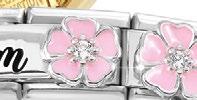




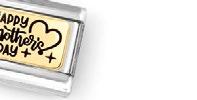

















Surging interest among men in non-invasive anti-aging solutions for combatting fine lines and wrinkles is challenging the perception that aesthetic treatments are only for women.


Dr Reza Mia, an aesthetics and anti-ageing specialist, notes that since starting in the field of non-invasive beauty treatment, he has seen an increase from 10% to 40% in male patients at his clinic seeking to address common aging concerns, improve their looks, and boost their confidence.
“We’ve observed a significant shift as more men are motivated by their partners or friends to visit the clinic for assessment. More men have also seen and recognised that modern aesthetic treatments do not create noticeable or unnatural-looking distortions to facial proportions, and can significantly enhance their appearances,” he says.
Why are men turning to cosmetic treatments?
Just as braces transformed the norm for straight teeth, cosmetic treatments for men have evolved into a prevalent practice today as men notice that they are working for others and likewise want to retain a more youthful appearance, notes Dr Reza.

Another factor influencing the rise in male interest in cosmetic treatments is improved health and higher life expectancies.
“No one wants to look older when they feel healthy on the inside, they’re still active, and they want to stay involved with society. Men want to move with the times and look the part, and aesthetic medical treatments can provide the positive outcomes they’re looking for,” he says.
He adds that in the past, male patients also often avoided aesthetic treatments due to the mistaken belief that it would dramatically alter their appearance to look artificially disproportioned and would require significant downtime for healing. But, with advancements in treatments and the work of reputable practitioners, this is no longer the case, as treatments are minimally invasive and have fewer side effects or downtime.
“With growing awareness of these advancements, men are now more receptive to aesthetic treatments and are looking to obtain a more natural, youthful look.
“Additionally, the psychological benefits of aesthetic treatments are driving more people to opt for non-invasive solutions that are beneficial for an overall healthier look and self-esteem. Men are looking to take better care of their skin and bodies, mainly focusing on frown lines, acne-scar treatments, and hair loss,” Dr Reza adds.

In addition to the myth that cosmetic treatments always result in asymmetric facial proportions, Dr Reza warns that a common misconception regarding aesthetic treatments is the expectation that treatments will have immediate results.
“Although cosmetic treatments are fairly quick and painless, it takes time for patients to obtain the desired results. It’s a journey, and it takes a few treatments before you’ll see substantial changes. My advice for patients considering treatment is to be patient and consult with your practitioner to ensure that you have all the information you need to achieve the best results.”
Other myths that he debunks are that procedures have exorbitant prices and are only for the rich, commenting that it’s more affordable than invasive cosmetic surgery and forms part of leading a healthier life.
Experts suggest men take better care of their skin
Dr Reza notes that men’s skin is more prone to scarring and suggests that they seek treatment if they struggle with ingrown beard hair and acne scars.
“Similar to women, many concerns men have about their skin are genetic or hormonal. But with the right treatment that is tailored to your specific skin type and problem areas, we can effectively address these areas with customised treatment options.
He emphasises that anti-aging art focuses on aesthetics with timeless elegance to ensure long-term solutions for the individual’s specific needs. Through cutting-edge technology and research-backed treatments, Dr Reza ensures lasting results for an overall more authentic and healthier look.
The short answer is when they’re ready, says Childhood & Special Education expert Nicole Mackiewicz.
Their communication skills will begin with smiles, giggles, claps, and babbles before any words make it out. But while you wait for your tot to say full words, sentences and more, use these tips to help promote their language development right now.
Once your child starts learning a few words, the talking train can really pick up steam. They’ll go from babbling to pointing at and naming things. Between 18 and 24 months they may encounter a “word spurt,” increasing their vocabulary dramatically. By age two, kids can typically string two words together (e.g., “mama car”).

Positive reinforcement is key.
Start story time, early: They might not understand everything right away, but reading introduces your baby to the flow of language. Point to and identify the pictures in the book; if there are animals, make each animal’s noise! The illustration and exciting sounds will keep your kid engaged and having fun.
Singing, rhyme, dance: Music is a great way to introduce your baby to words. Babies love simple rhymes and sing-along songs while repetition reinforces key words or phrases. Music also introduces
them to fun physical movement. In my house, it has led to many family dance parties!
Play with toys that bring their world down to size: Toys that resemble familiar objects and places, like animal and people figures and playsets, help children identify real-world concepts up close and encourage pretend play. The Fisher-Price “First Words Puppy” and “First Words Sis” are ideal as they also provide learning across three stages of development for your child.
Narrate and label anything, everywhere: Talk and identify items through your everyday tasks: “Time to get into Mommy’s car.” “Time to get dressed, let’s get your blue pants on.” If they can touch it, see it, and hear it (especially repeatedly), they are making a connection between words, concepts, and objects.
Praise your little talker: Positive reinforcement is key. Let your little one know they are on the right track by keeping the praise and encouragement coming when they identify objects and use words correctly.
Keep some banter going: Show them how to carry a conversation by asking them questions, waiting for them to “answer” and responding to their babbles or oneword statements. Continue chatting about whatever they seem interested in (e.g., if they point at someone, say, “There’s a person, wave hello!”).
So your mini-me is taking their sweet time getting out those first words. I know, it can seem concerning, but remember that each child is unique and will develop their communication skills on a timeline that’s right for them. Even if they’re not speaking, they’re still listening and soaking up speech patterns from what they hear spoken around them.
They’re also likely learning nonverbal forms of communication like staring at, reaching for, and pointing at desired objects. And they’ll start to understand you before they’re able to answer you with their words.


Digital is a fundamental part of our everyday lives, including the lives of primary school children. It has become an extension of ways of learning and creativity; however, it also presents risks such as cyberbullying, sexual extortion and risks to privacy.
According to the UNICEF SA Kids Online Study, 95% of children in South Africa use the internet regularly but are not aware of these risks and how to handle them. An even more shocking 70% of children do not share what they are exposed to.
Social Kids South Africa is a programme dedicated to guide and protect children under 11 years old as they navigate the online world. This digital adventure is essential training that children need to ensure they know what information they should share online, how to protect their privacy, understand how an algorithm works and how to deal with cyberbullies. They learn good manners online and how to spot fake news and ensure the site they are on is secure.

“The reality is children are being exposed to the digital world from a young age. But what are we doing to show them the right way to surf the net, know their rights and how to handle situations they may find themselves in?” says Cheryl Barnett, co-founder of Social Kids ZA.
“We can monitor their online behaviour and try being online 24/ 7 but ensuring a child is aware of the threats, is comfortable to communicate and empowered with knowledge, the more likely they are to steer away from dangerous situations,” she adds.

Building digital literacy at a young age empowers your child with the right tools and knowledge to help them when they are older and in the infamous teenage years.
Rather than letting your child learn from their peers or through trial and error, Social Kids mascot, Codey Crawler, shows children how to be safe when they go online and to think before they click. If your child is playing games on a phone or watching YouTube, they are vulnerable to master manipulators online.
The programme has five adventure levels, each ending in an activity that must be submitted to earn a digital badge. Codey Crawler and his bestie, Miss Nadie, take little adventurers on a journey with the purpose of upskilling them via fun and ageappropriate pre-recorded lessons.
Adventure level 1: the adventure begins with the dos and don’ts of digital safety. Children are taught about their digital fingerprint and the trail they leave online.
Adventure level 2: teaches the little adventurer what cyberbullying is, how to navigate and stop it by sharing with their circle of trust. This adventure level teaches them to safeguard their information and understand what details are safe to share.
Adventure level 3: in this lesson, Codey, and Miss Nadie focus on how to spot fake stories, the importance of asking questions and how to fact-check and always ask permission from parents before sharing.
Adventure level 4: Codey describes online manners, what certain messages and symbols on the internet mean and how to interpret them. He goes into detail on how to play games safely and when to show your true colours or when not to!
Adventure level 5: Codey reinforces the main topics covered to ensure the brave adventurers can confidently connect with the world. It ensures they understand the dangers that could be out there and highlights the positives that the digital world has to offer.
Parents have access to in-depth parent guides created to add value to parents. The guides show them step by step how to protect their privacy, educating them on the best ways to set boundaries from a young age and improving their relationships as they grow and learn online. The programme can be taken together or via a Jump in-Jump out online class with Miss Nadie in the afternoons, every weekday.
Cheryl and Bryan Barnett developed this programme to protect their son.
“We have seen how fast this digital world is changing and how our children are being exposed to it, with little to no guidance. The focus only comes into place after they are well into their teens, and the bad habits have already been formed. Hence our focus is on the younger generation.”
PARENTS URGED TO TALK ABOUT MENTAL HEALTH
The pressures facing today’s generation of adolescents and young adults are taking a toll on their mental health, increasing the risk of drug addiction and suicide.


“Even in the best of circumstances, adolescence and the transition from childhood to adulthood is a vulnerable phase of development,” says Dr Kavendren Odayar, a psychiatrist practising at Netcare Akeso Gqeberha.
“For any young person, it can be difficult to adjust to the rapid physical and emotional changes during this time –even without a mental health disorder in the picture. Parents, teachers, and caregivers should therefore be alert to signs that could suggest adolescents or teenagers are struggling,” Dr Odayar says.
“Many of us may remember how the challenges we faced at school and shifts in understanding of individual identity impacted our emotional state. On top of this, the current generation of young people still bears the mental health scars of the Covid-19 lockdown.
“In the past five years, data suggests that adolescent mental health has been deteriorating worldwide with high rates of depression, anxiety, and traumarelated outcomes including substance abuse.”
The prolonged period of social isolation and social distancing during the pandemic could have disrupted certain aspects of the critical development that takes place during adolescence.
“This isolation goes against the social nature of human beings, and many teenagers are still living with the consequences of mental disorders that developed or escalated during lockdown,” he says.
“Temptation to experiment with drugs in the context of this mental health pandemic is more likely to be amplified, potentially leading to full-blown
substance use disorders as there is known to be a relationship between addiction and other types of mental health disorders.”
Adolescent suicide is most frequently due to mental illness Dr Odayar says many families prefer not to think about teenagers or adolescents taking their own lives and may not realise the full implications of changes in behaviour that could indicate mental health concerns.
“This is significant, as adolescent suicide is most frequently due to mental illness, and suicide has been documented as the second largest contributor to adolescent mortality.”
Young people experiencing anxiety, depression, or other ‘unseen’ emotional or psychiatric issues may find it hard to put
what they are going through into words or might feel a sense of shame about speaking up about it to their parents, other adults or even their peers.
“To this day, there is still unfortunately sometimes a stigma attached to mental health, and this can result in young people feeling distressed and not seeking help. Given the high incidence of suicide in this age group, I would urge families to check in with the younger generation and ask them about how they are coping in a supportive, sensitive way.
“In the fast pace of day-to-day life, it is all too easy to lose touch with young people – even if they are living under the same roof. Early detection is key to preventing suicide. Parents, please talk to your children and take notice of them – no matter how busy you may be,” he says.
Social withdrawal, changes in eating or sleeping patterns, and acting out in ways that seem out of character can indicate potential cause for concern, as mental illness is picked up by those closest to them who notice changes in the person’s behaviour.
“These warning signs suggest the need to seek professional help. A young person talking about death or suicide is even more urgent and should never be ignored, dismissed, or punished,” says Dr Odayar.
“While there are not always noticeable signs of a young person’s suicidal intention, as a society, we need more awareness and less stigma to help adolescents and teenagers find mental health support to help prevent such tragedies wherever possible,” he adds.
In any mental health emergency, or for advice in accessing mental health care for yourself or a loved one, ask for support.
Netcare Akeso offers a 24-hour crisis line on 0861 435 787. Trained counsellors are available to talk to without judgement and can guide you on the various options for assistance.
The South African Anxiety and Depression Group (SADAG) also provides a 24-hour suicide crisis helpline on 0800 567 567.


Teenagers may experience bullying, harassment, or discrimination from their classmates, teachers, or online.
The teenage years are a time of transition, growth, and challenges for both parents and children. As teenagers enter high school, they face new academic, social and emotional pressures that can affect their well-being and behaviour. While this time might feel perplexing and very challenging for parents, they play a crucial role in helping their child navigate the transition from childhood to adulthood, an education expert says.

“Many parents find it hard to understand and connect with their teenagers, who may seem distant, rebellious and unnecessarily moody. However, effective communication is arguably the most effective strategy to help parents navigate the teenage years and support their teenagers’ development,” says Desiree Hugo, Academic Head at ADvTECH Schools.
But while most people probably understand and value the importance of effective communication, making effective communication happen is easier said than done for a great many parents of teenagers, she notes.
Hugo says parents must acknowledge that high school represents a big change for teenagers, who have to deal with more complex and demanding coursework, higher expectations and increased competition, amidst new friendships and social environments.
“They have to make important decisions about their future, such as what subjects to take, what career to pursue, and university choice. These decisions can cause constant stress and anxiety for teenagers, who may feel overwhelmed or uncertain about their choices.”
“Teenagers may experience bullying, harassment, or discrimination from their classmates, teachers, or online. They may also face temptations to engage in risky behaviours, such as smoking, drinking, or using drugs. High school can also affect teenagers’ emotional development, as they go through hormonal changes, mood swings, and identity issues,” says Hugo.
“It is important for parents to understand their children’s well-being, and that they often feel isolated, misunderstood, or unsupported by their parents, who may not know how to deal with their emotional needs.”
The role of effective communication
Building an environment characterised by effective communication is essential for parents to help their teenagers cope with the challenges of high school and foster a positive and trusting relationship, says Hugo.
“Effective communication can help you and your teenager understand each other better and avoid misunderstandings or conflicts and build trust and respect for each other’s perspectives and choices. You want to be the first person your teen contacts when they are facing difficult decisions and situations,” says Hugo.
Effective communication benefits your teenager’s academic, social, and emotional development.
By communicating effectively, you can help your teenager:
• Improve their academic skills,
• Develop their social skills,
• Enhance their emotional skills and resilience,
• Boost their self-esteem, self-confidence, and selfidentity,
• Prevent or reduce their involvement in risky behaviours, and
• Build trust in family relationships.
Guidelines for effective communication:

Hugo says developing effective communication skills is a marathon, not a race, but that consistently being aware of the benefits will ultimately be rewarding for both parent and child. She advises parents to consider the following guidelines:
Choose a good time and place to talk, when you and your teenager are both calm, relaxed, and free from distractions.
Use assertive communication, such as “I need” or “I want” to state your own needs and expectations, without being aggressive or passive.
Use open-ended questions, such as “How was your day?” or “What are you interested in?” to invite your teenager to share their thoughts and feelings.
Use compromise and negotiation, such as “Can we agree on?” or “Can we find a middle ground?” to resolve conflicts or disagreements, without imposing or giving in.
Use active listening skills, such as nodding, smiling, or paraphrasing, to show your interest and attention.
Use humour and fun, such as jokes, games, or activities, to lighten the mood and bond with your teenager.
Use positive feedback, such as praise, appreciation, or encouragement, to acknowledge your teenager’s achievements and efforts.
Use empathy and compassion, such as “I understand” or “I care” to show your support and understanding for your teenager’s challenges and emotions
Use “I” statements, such as “I feel” or “I think” to express your own thoughts and feelings, without blaming or accusing your teenager.
Don’t underplay your teens concerns by highlighting future positives, let them live in the moment and acknowledge the concern.
“Effective communication is not a one-time event, but a continuous process that requires patience, practise and perseverance. The more you communicate consistently and effectively with your teenager, the more you will strengthen your relationship and enhance your teenager’s social, academic and personal development journey,” says Hugo.

ULTIMATE BLENDS BRINGS THE WORLD OF DISNEY INTO YOUR LITTLE ONE’S BATH TIME TO MAKE SHAMPOOING AND DETANGLING A PLAYFUL ADVENTURE.
ENRICHED WITH NATURAL ORIGIN INGREDIENTS HYPOALLERGENIC TESTED UNDER PEDIATRIC CONTROL













kicks for kids 3... 2... 1
4...
Explore and let your creativity shine with puzzles and pictures!




The atmosphere is essential for life on Earth, and is made up of a mixture of gasses such as nitrogen, oxygen, argon, and carbon dioxide that we commonly refer to as air.
 MATCH BY COUNT
MATCH BY COUNT
Gravity keeps us grounded. There's very little gravity inside a space station so everything floats if not held in place.

The moon is our nearest neighbour, which is about 384 400km away.

Neil Armstrong was the first human to walk on the moon during the NASA Apollo 11 mission on 20th July 1969. He completed the mission alongside co-pilots Edwin E. “Buzz” Aldrin and Michael Collins.
DOTWho says MOO? Who says NEIGH? What other things do animals say? Animals are sweet, silly, and NOISY in this fun early learning sound book for toddlers aged 1-3 years old.
Kids will love listening to cows MOO, elephants TRUMPET, and owls HOOHOO as they press each button twice to hear two unique animal sounds. The book has engaging, rhyming text and a mix of bright, colourful illustrations and real-life photography. Big buttons are perfect for little fingers while corresponding pictures will prompt your little one to press the button. And the sturdy board pages are great for busy kids on the go! Get ready for preschool and learning the fun, interactive way!
Colours
Colours are fun and noisy in this early learning sound book for toddlers aged 1-3 years old. Listen to the colour word RED, see lots of RED things, and hear a RED fire truck! Six bold, bright colours are illustrated along with real-life photographs and fun art. Big buttons are perfect for little fingers while corresponding pictures will prompt your little one to press the button. And the sturdy board pages are great for busy kids on the go! Get ready for preschool and learning the fun, interactive way!
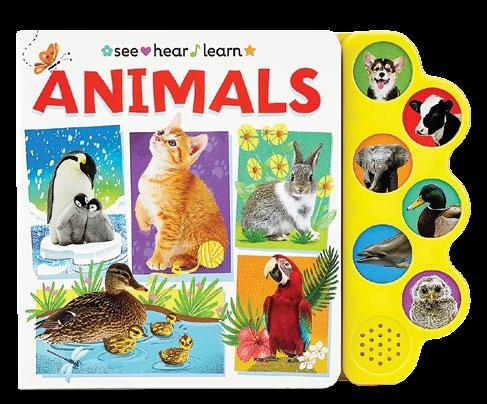


Dinosaur & Unicorn
A lovely gift set! Watch the squishy pages of the bath book magically change colour when it gets wet! The matching dinosaur toy also changes colour when it's immersed in warm water, just like magic!

The unique combination of a plush snapband and board book is a huge hit with kids. The beautifully illustrated board book features a short story all about the Sparkly Unicorn. Just snap the plush unicorn or sloth onto your arm and snuggle up for a story all about your new cuddly friend!
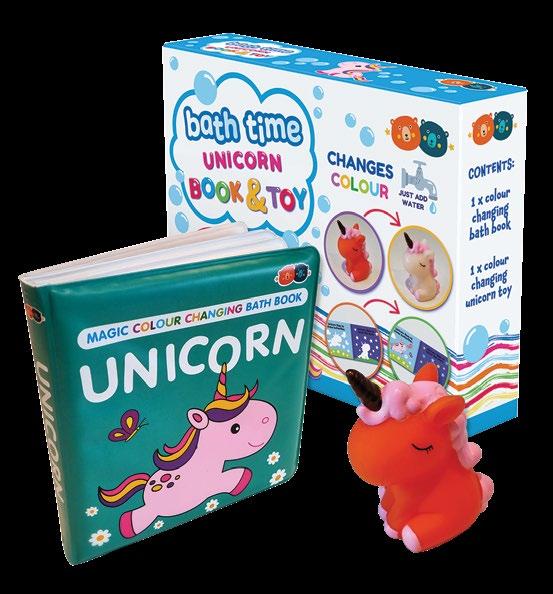


































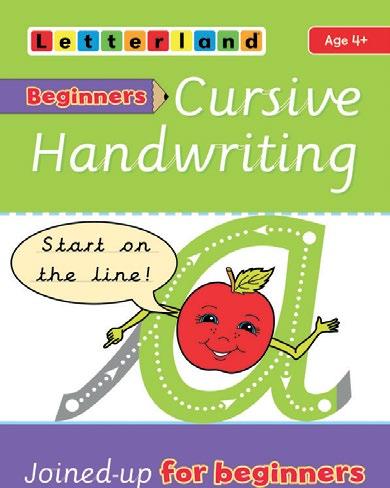








































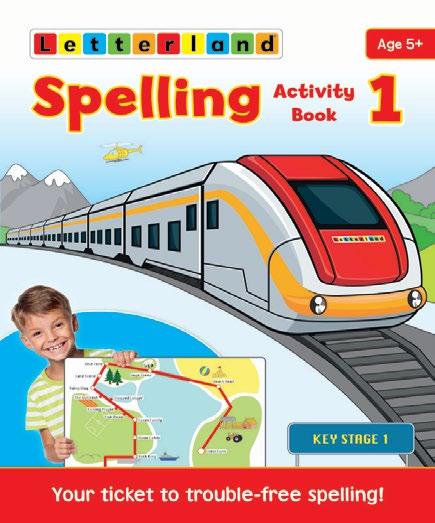












Use your space and get creative with explorer plants that love to climb and crawl. There is still plenty of gardening to be done in compact gardens, on the patio, and all around your balcony. Don’t let space restrictions limit your green fingers.
By Life is a GardenBest
Creepers and climbers will go to town on any wall, pillar, or arch where trellis support is possible. Consider these indigenous showstoppers that are low maintenance and naturally adapted to our climate.

Pink trumpet vine (Podranea ricasoliana) in full sun. They boast an abundance of fragrant lilac-pink flowers.
TOP TIP
Arches, beams and pillars are a climber’s dream. Secure some wire around these structures and let your explorer plants do the rest. This is gardening and living décor achieved with simplicity and style.



Flame creeper (Combretum microphyllum) in full sun. They are truly spectacular with flaming crimson flowers.
Cape honeysuckle (Tecomaria capensis) in full sun. They bare tubular blooms in red, orange, yellow, and salmon.


TRY THIS
Go for a sophisticated succulent look by pairing potted rock roses with elegant white frames. Scatter white pebbles around your succulents to really bring out their eyes.
If you’ve got a barren wall, decorate it with life! Get the look.
1. Secure a few vertical growing containers against a wall.
2. Upcycle some large frames with character and texture, secure them around the containers.
3. Half fill your pots with compost and potting soil.
4. Visit your nearest nursery and grab these lovelies to grow in your gallery:
• Shaded babes: fuchsias, wild iris, September bush, and impatiens
• Sun lovers: black-eyed Susan, climbing snapdragons, verbena, and geraniums
You can even have your own little drinks prep station that neatly folds away or acts as a nifty cocktail herb station.
• Sun & semi-shade stunners: Spanish daisy (Erigeron karvinskianus) and bacopa (Sutera cordata)
TRY THIS woven baskets from hooks for additional storage space and décor charm.

Ditch the lawn and go for gorgeous ornamental grasses to showcase walkways and cover barren areas. Try ophiopogon japonicus 'Kyoto', zoisia tenuifolia, and white carpet (Falkia repens).
• Outdoor mirrors will help make your area appear larger.
• Suspend your furniture to save floor space.


Hanging baskets and containers are your best friends for patio gardening. Experiment with different hangers to compliment your décor and unique style of these jungle-inspired plants:
• Silver falls (Dichondra argentea)
• Holly fern (Cyrtomium falcatum)
• Forest bell bush (Mackaya bella).
• Extend your indoors to the patio with outdoor carpets and homey accessories.
• Paint outdoor fences a quarter way up with a dark colour to create an illusion of height.
• Play with textures like pebbles and wood chips to create intrigue and depth.
• Use solar lighting to strategically highlight focal points in the space.
• Go for large tropical palms that will add height and fill up empty spaces in no time.
TRY THIS
Instant kids’ corner Inflatable pools can be used as temporary sandpits or cool off zones that can easily be packed away after playtime. Add a couple of beach toys and an umbrella or throw in some bubble bath mix!


1kg boneless, skinless chicken thighs
1 cup all-purpose flour
¾ teaspoon sea salt
½ teaspoon freshly ground pepper
1 cup bread crumbs
2 tablespoons finely grated
Parmigiano-Reggiano cheese
1 teaspoon dried oregano
½ teaspoon dried basil
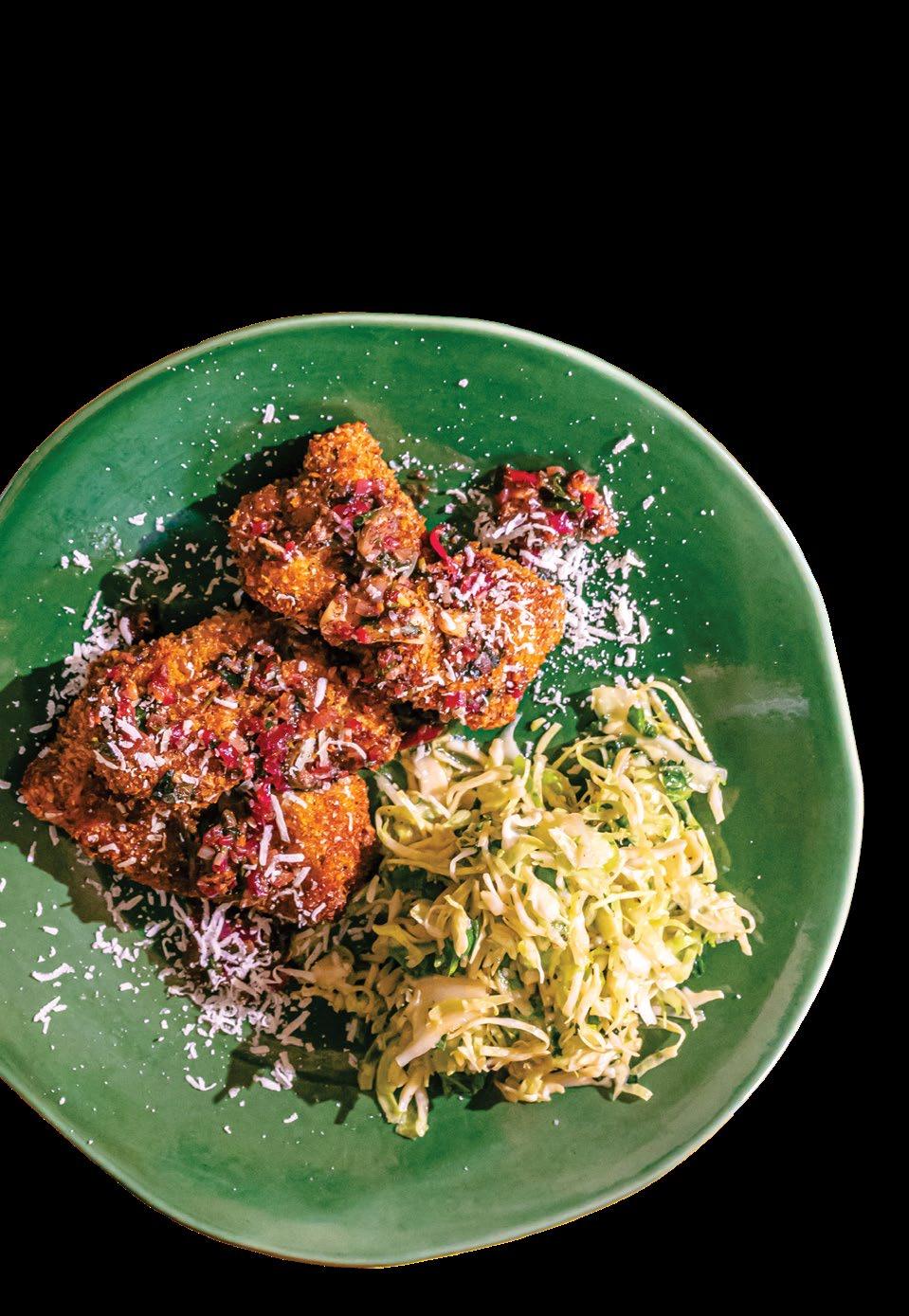
⅛ teaspoon cayenne pepper
4 large eggs
2 sticks of Parmalat salted butter
3 shallots/1 large red onion, minced
3 tablespoons capers, drained
1 lemon, thinly sliced

In a shallow baking dish, mix the flour, salt and pepper.
In another shallow baking dish, mix the breadcrumbs, cheese, oregano, basil and cayenne.
Place the eggs in a medium bowl and beat well.
Working with one piece of chicken at a time, dredge in the flour, then dip the chicken in the egg, allowing any excess to drip back into the bowl. Dredge in the breadcrumbs, pressing to help the crumbs adhere. Place on a baking sheet.
In a large pan, melt the butter over medium heat. Add the chicken pieces and cook until golden brown and cooked through, turning halfway for 5 to 7 minutes.
Transfer the chicken to a serving platter. Repeat with the remaining chicken.
Add the shallots and capers to the pan and cook, stirring for 30 seconds.
Stir in the lemon slices.
Spoon some of the sauce over the chicken and serve with the remaining sauce on the side.
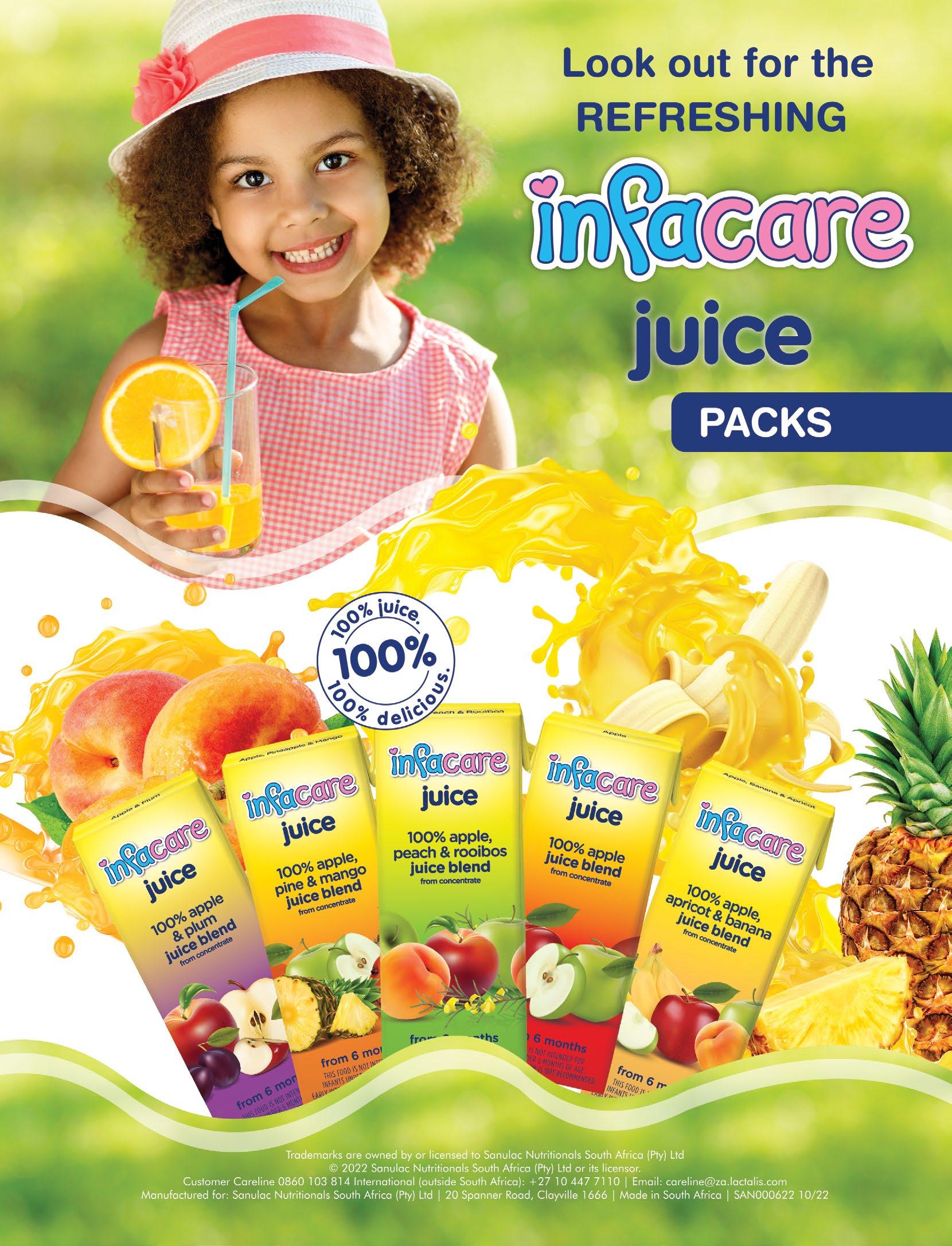 By J’Something and Cordelia 'Coco' da Fonseca
By J’Something and Cordelia 'Coco' da Fonseca

For the dough
3 tablespoons active dry yeast
2 cups warm milk
1/3 cup sugar
1/3 cup melted Parmalat salted butter
2 teaspoons salt
1 egg
6 cups flour
Method
For the dough
1 2 3 4
5
For the cream cheese icing
Dissolve the yeast in warm milk for 5 minutes.
1 block of cream cheese, softened
1/3 cup Parmalat salted butter, softened
4 cups icing sugar
1 teaspoon vanilla extract milk
zest of 1 lemon
Add all ingredients, except the flour and salt, in a stand mixer and mix with a dough hook until smooth.
Gradually add the flour and salt and mix until just combined.
Turn dough out onto a floured surface and knead gently until dough is soft and incorporated.
Place dough in a greased bowl, cover with a towel or plastic wrap, and let rise until doubled (about an hour).


For the filling
½ cup Parmalat salted butter, softened
¾ cup brown sugar
3 cups frozen raspberries
1/3 cup white sugar
3 teaspoons corn flour

For the rolls
After the dough has risen, punch it down. Roll out onto a floured surface and into a large rectangular shape.
withIn a saucepan, mix raspberries with white sugar and corn flour. Mix gently until berries are mashed and ingredients are well combined and allow to cool.
Spread butter onto the dough. Sprinkle with brown sugar and then evenly spread raspberry mixture across the dough.
Roll dough into a vertical log. Cut the dough to make 12 rolls. Place in a pan that is lined with baking paper.
Cover and let rise for 45-60 minutes until doubled in size.
Bake at 180C for 20-25 minutes, until tops are golden brown.
For the cream cheese icing
In a stand mixer, whip butter and cream cheese on high speed until fully incorporated.
Turn down the speed and add the lemon zest, vanilla, and icing sugar, one cup at a time, alternating with milk or cream (1 tablespoons at a time).
Continue adding powdered sugar and milk until you get a smooth consistency.
Remove the rolls and ice them immediately.
Add some fresh raspberries on top.








Cape Point Vineyards is a family-owned vineyard in Noordhoek on the Cape Peninsula, set majestically against the slopes of the famous Chapman’s Peak Mountain range and overlooking the nearby Atlantic Ocean – a mere 1.2km away.
This delightful vineyard by the sea offers a variety of dining options. All of our sections are family-friendly and offer a scrumptious kiddie's menu. We have two jungle gyms for the kids to play on to accommodate all ages. Kiddie's tasting options are coming soon!
The Courtyard
Join us in the Courtyard for a Sunday family lunch. You can relax on the lawns and soak up the views or sit at a table and chairs under the pergola. Flatbreads, sliders, and cheese and charcuterie platters are a top choice to snack on during your experience with us.
Cape Point Vineyards is regularly cited as having one of the best vineyard experiences in and around Cape Town. Linger longer on our lawns and enjoy a picnic basket while you soak up the view, and the children play.
Our picnics offer panoramic views of the Atlantic oceans, mountains, Fynbos, and vineyards. At R598 per couple, you get a delicious picnic basket to nibble on while you enjoy the views and a glass of one of our award-winning Sauvignon Blancs.

T +27 21 789 0900
E info@cape-point.com
Cape Point Vineyards, Silvermine Road, Noordhoek






Long-term insurance, designed to safeguard against life's unpredictable twists and turns, demands our attention. A thorough examination of these policies ensures that they evolve in correlation with the changes in our lives, from the addition of new family members to shifts in income and the inevitable passage of time.By Velmah Nzembela, Chief Marketing Officer at Assupol Life

Long-term insurance, encompassing life, disability, and income protection policies, forms the backbone of financial security. Regularly reviewing these policies is paramount, given life's dynamic nature. Events such as marriage, the birth of children, the loss of a loved one, or fluctuations in income necessitate adjustments to ensure comprehensive coverage.
Marriage and family expansion:
As families grow, so do responsibilities. Evaluate your life insurance to account for new dependents and ensure that the coverage aligns with your family's current and future needs.
Loss of a loved one: In the unfortunate event of the death of a family member, reassess life insurance coverage to determine if adjustments are needed to provide adequate financial support for the remaining members.
Regular updates: Periodically update personal information, including beneficiaries, to ensure accuracy and alignment with your current circumstances.
Assess coverage adequacy: Evaluate the adequacy of your coverage based on changes in your life. Consider whether your current policies sufficiently protect your family's financial future.
Explore policy riders: Some policies offer riders (commonly known as additional benefits) that can be added to enhance coverage. Explore options like accelerated death benefits or additional income protection riders to customize your policy according to your needs.
Understand policy terms: Familiarise yourself with the terms and conditions of your policies. Understand any exclusions, waiting periods, or limitations to avoid surprises during critical moments.
Seek professional advice: For complex life changes or intricate policies, seek the guidance of a financial advisor. Their expertise can help you navigate the intricacies of long-term insurance and make informed decisions.
Changes in income:
Whether it's a promotion, career change, or a period of reduced income, your long-term insurance should reflect your financial status. Adjust coverage to safeguard your loved ones against unexpected financial challenges.
Disability and income protection: A disability can have longterm financial implications. Review disability and income protection policies to ensure they offer sufficient coverage, considering potential changes in your ability to generate income.

Reviewing your long-term insurance policies is not just a prudent financial practice but a commitment to securing your family's future. By staying proactive in your approach, you can rest assured that your long-term insurance will stand as a steadfast guardian, providing peace of mind for the years to come.

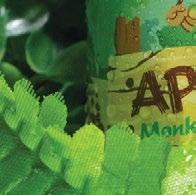
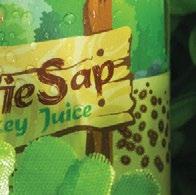
PRICE:






In Africa, Artemisia and Pelargonium have both been used for ages as herbal medicine for malaria, flu, fever, sinusitis, coughing, gut inflammation, mouth sores, and viral infections.






Now Nutramed brings you its brand new ApieSap, a natural supplement with healing and life-changing capabilities beyond your imagination.
Beautiful leather baby bags, backpacks and accessories.
Beautiful leather baby bags, backpacks and accessories.
All products locally made since 2012 - balancing quality, comfort and style.
All products locally made since 2012 - balancing quality, comfort and style.
T +27 (0)12 881 6655
E orders@nutramed.co.za
W www.nutramed.co.za











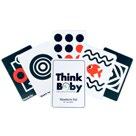















Introducing Portia M Baby, nestled in the heart of South Africa, your trusted companion for nurturing your baby's delicate skin with the utmost care and tenderness.
Our range of bath and body care items is thoughtfully crafted to provide a gentle and soothing experience for your little bundle of joy.
Our range offers a harmonious balance between our Scented and Unscented collections, ensuring that every baby receives the gentle care they deserve.
For those seeking a fragrance-free option, our Unscented Range is the perfect choice. Specically formulated for babies with sensitive skin, including those prone to eczema, this collection provides gentle cleansing and moisturizing without any
added fragrances or irritants. Let your baby's skin breathe easy with our Unscented Range, designed to soothe and protect even the most delicate skin.
Alternatively, our Scented Range offers a subtle infusion of fragrance, adding a touch of luxury to bath time without compromising on gentleness. Each fragrance is carefully selected to ensure it's mild and suitable for sensitive skin, allowing you to enjoy a moment of relaxation while bonding with your baby. Indulge in the delicate aromas of our Scented Range and create precious memories with your little one.




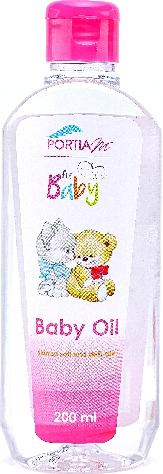


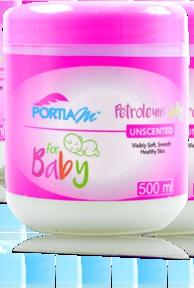


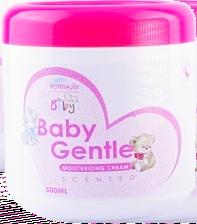





Caring for your baby's skin goes beyond just bath time. It's a chance to bond, connect, and express your love in the most gentle way. With Portia M baby range, every touch becomes a loving embrace.

Our products are:
• Dermatologist-tested and approved, ensuring safety and effectiveness for even the littlest ones.
• Free from harsh chemicals and dyes, prioritizing the purity and well-being of your baby's skin.
• Formulated with plant-based ingredients and essential oils, harnessing the power of nature for gentle yet effective care.
Give your little one the gift of healthy, happy skin and experience the love that shines through with every touch. Choose Portia M baby range and unlock a world of gentle, effective care.
Available at















